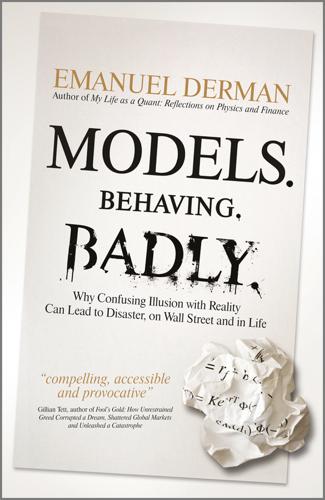
Models. Behaving. Badly.: Why Confusing Illusion With Reality Can Lead to Disaster, on Wall Street and in Life
by
Emanuel Derman
Published 13 Oct 2011
All that differentiates one stock from another is their respective values of μ and σ—nothing else. Two securities with the same μ and σ are therefore similar. The Law of One Price combined with the EMM then leads to the following conclusion: Any two securities with the same foreseeable volatility should have the same expected return.9 There is a shallow resemblance between the Law of One Price in finance and Einstein’s principle of relativity in physics, presented in the table below. Principle of Relativity Law of One Price All observers, irrespective of their speeds, should, from their observations, deduce the same equations for the laws of nature.
…
One of the lessons of the credit crisis that began in 2007 is that the models used to determine the value of mortgage securities did not include in their expectations the possibility of the catastrophic future scenarios that actually occurred. The Law of One Price: Similar Securities Have Similar Prices To answer a general question requires having a principle. The only principle you can rely on in finance (and it’s not always reliable) is the Law of One Price: If you want to know the value of one financial security, your best bet is to use the known price of another security that’s as similar to it as possible. When we compare it with almost everything else in economics, the wonderful thing about this law of valuation by analogy is that it dispenses with utility functions, the undiscoverable hidden variables whose ghostly presence permeates economic theory.
…
When we compare it with almost everything else in economics, the wonderful thing about this law of valuation by analogy is that it dispenses with utility functions, the undiscoverable hidden variables whose ghostly presence permeates economic theory. Financial economists like to recast the Law of One Price as the more pedantically named Principle of No Riskless Arbitrage: Any two securities with identical future payoffs, no matter how the future turns out, should have identical current prices. This Law of One Price embodies the common sense that the author of “the fundamental theorem of finance” was trying so hard to convey but expressed so unclearly. In the imaginary world of the Efficient Market Model, a stock’s price movements are completely characterized by its expected return μ and its volatility a.
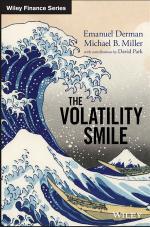
The Volatility Smile
by
Emanuel Derman,Michael B.Miller
Published 6 Sep 2016
Given enough time and enough information, market participants will end up enforcing the law of one price and the principle of no riskless arbitrage as they seek to quickly profit by buying securities that are too cheap and selling securities that are too expensive, thereby eliminating arbitrage The Principle of Replication 15 opportunities. In the long run, in liquid markets, the law of one price usually holds. But the law of one price is not a law of nature. It is a statement about what prices should be, not what they must be. In practice, in the short run, in illiquid markets or during financial crises and panics, and in some other instances too, the law of one price may not hold.
…
In this book we’ll mostly take the viewpoint of a trading desk or a market maker who buys what others want to sell and sells what others want to buy, willing to go either way, always seeking to make a fairly safe profit by creating what its clients want out of the raw materials it acquires, or decomposing what its clients sell into raw materials it can itself sell or reuse. For trading desks that think like that, valuation is always a relative concept. CHAPTER 2 The Principle of Replication The law of one price: Similar things must have similar prices. Replication: the only reliable way to value a security. A simple up-down model for the risk of stocks, in which expected return 𝜇 and volatility 𝜎 are all that matter. The law of one price leads to CAPM for stocks. Replicating derivatives via the law of one price. REPLICATION Replication is the strategy of creating a portfolio of securities that closely mimics the behavior of another security. In this section we will see how replication can be used to value a security of interest.
…
If we used daily or monthly returns to calculate the average return and volatility, we would get a different Sharpe ratio. By convention, Sharpe ratios, then, are reported in units of (year)−1/2 . In this model world, World #1, with a finite number of uncorrelated stocks, the law of one price requires securities with the same volatility to have the same expected return. Stated another way, therefore, the law of one price requires all uncorrelated securities to have the same Sharpe ratio. Notice, importantly, that the law of one price, at least so far, has not given us an indication of the magnitude of the Sharpe ratio, but only that it is the same for all uncorrelated securities. SAMPLE PROBLEM Question: Suppose an emerging markets index has an expected return of 24% per year and an annual volatility of 30%.
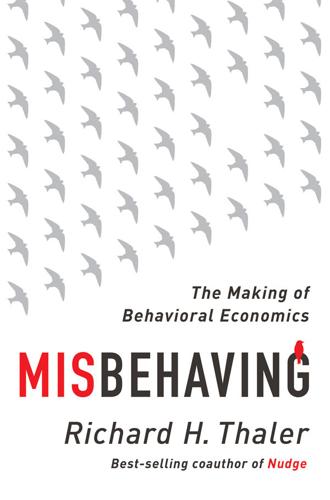
Misbehaving: The Making of Behavioral Economics
by
Richard H. Thaler
Published 10 May 2015
” † To be clear, it can be quite smart to invest in closed-end funds when they sell at a discount, but it is foolish to buy one when it is first issued and a commission is being charged. 26 Fruit Flies, Icebergs, and Negative Stock Prices The debate with Merton Miller obscured the most important point about closed-end funds: the blatant violation of the law of one price. It was as if we had discovered a unicorn and then had a long fight about what to call the color of the beast’s coat. Years later, after I had joined the University of Chicago, I revisited the law of one price with a Chicago colleague, Owen Lamont. At that time Owen was not really a behavioral economist. He was just an open-minded researcher who enjoyed stirring the pot and had a good eye for interesting problems.
…
Why buy Palm directly when you can get more shares for less money by buying 3Com, plus get a stake in another company thrown in for free? This was a colossal violation of the law of one price. In fact it was so colossal that it was widely publicized in the popular press. Nevertheless, the value of the 3Com stub remained negative for several months. How could this happen? Two ingredients are necessary for a violation of the law of one price to emerge and persist. The first is that you need some investors with an inexplicable desire to own a pure, unadulterated version of Palm rather than one watered down with extra money and a share of a profitable company.
…
A smoking gun would be required to convince Fama and the rest of the efficient market clan. But as we saw earlier, intrinsic value cannot be determined with precision, which makes it hard to prove that stock prices deviate from intrinsic value. One possible approach to testing whether prices are “right” is to employ an important principle at the very heart of the EMH: the law of one price. The law asserts that in an efficient market, the same asset cannot simultaneously sell for two different prices. If that happened, there would be an immediate arbitrage opportunity, meaning a way to make a series of trades that are guaranteed to generate a profit at no risk. Imagine that gold sells for $1,000 an ounce in New York and $1,010 an ounce in London.

A Primer for the Mathematics of Financial Engineering
by
Dan Stefanica
Published 4 Apr 2008
Trading costs, lack of liquidity, the bid-ask spread, constant moves of the market that tend to quickly eliminate any arbitrage opportunity, and the impossibility of executing large enough trades without moving the markets make it very difficult to capitalize on arbitrage opportunities. In an arbitrage-free market, we can infer relationships between the prices of various securities, based on the following principle: Theorem 1.10. (The (Generalized) Law of One Price.) If two portfolios are guaranteed to have the same value at a future time T > t regardless of the state of the market at time T, then they must have the same value at time t. If one portfolio is guaranteed to be more valuable (or less valuable) than another portfolio at a future time T > t regardless of the state of the market at time T, then that portfolio is more valuable (or less valuable, respectively) than the other one at time t < T as well: If there exists T > t such that Vi(T) = V2(T) (or Vi(T) > V2(T), or Vi(T) < ~(T), respectively) for any state of the market at time T, then Vi(t) = ~(t) (or Vi(t) > V2(t), or Vi(t) < ~(t), respectively).
…
If the value of a portfolio of securities is guaranteed to be equal to 0 at a future time T > t regardless of the state of the market at time T, then the value of the portfolio at time t must have been 0 as well: If there exists T > t such that V(T) = 0 for any state of the market at time T, then V(t) = o. An important consequence of the law of one price is the fact that, if the value of a portfolio at time T in the future is independent of the state of the market at that time, then the value of the portfolio in the present is the risk-neutral discounted present value of the portfolio at time T. Before we state this result formally, we must clarify the meaning of "riskneutral discounted present value".
…
The value l;2(T) of this portfolio at time T is l;2(T) = er(T-t) l;2(t) = er(T-t) (ze-r(T-t)) z', cf. (1.42) for tl = t, t2 = T, and B(t) = l;2(t). Thus, l;2(T) = V(T) = z, and, from Theorem 1.10, we conclude that l;2(t) = V(t). Therefore, V(t) = l;2(t) = ze-r(T-t) = V(T) e-r(T-t) , which is what we wanted to prove. D P(t) + S(t)e-q(T-t) - C(t) = Ke-r(T-t). (1.47) We prove (1.46) here using the law of one price. Consider a portfolio made of the following assets: • long 1 put option; • long 1 share; • short 1 call option. The value5 of the portfolio at time t is VportJolio(t) = P(t) + S(t) - C(t). (1.48) - C(T) = K, (1.49) It is easy to see that Example: How much are plain vanilla European options worth if the value of the underlying asset is 07 Answer: If, at time t, the underlying asset becomes worthless, i.e., if S(t) = 0, then the price of the asset will never be above 0 again.

Hive Mind: How Your Nation’s IQ Matters So Much More Than Your Own
by
Garett Jones
Published 15 Feb 2015
This is an oversimplification, but it’ll help as a finger exercise. In this world, how would people decide to work in the O-ring sector rather than the Foolproof sector? How would the invisible hand of the market nudge workers in one direction or the other? The answer draws on one of the best ideas in economics, the law of one price, or LOOP. The LOOP says that as long as two precisely identical products are for sale, every consumer buys the cheaper product, and as long as two precisely identical jobs are available, every worker accepts the higher-paying job. This is an obvious enough point, but it has a surprising implication: if everybody follows the LOOP then nobody buys the more expensive good and nobody accepts the lower-paying job.
…
While less-skilled workers are poor substitutes for more-skilled workers in the O-ring sector, lower and higher skill levels are great substitutes for each other in the Foolproof sector. In the Foolproof sector you might be able to handle a dozen routine divorce cases with five fantastic lawyers or with seven or eight average lawyers; in the Foolproof sector you can have eight great cashiers running the checkout lines or you could have ten average cashiers. Again, the law of one price—and its close friend, pay for performance—will be at work in the Foolproof sector, so the average cashiers will earn a bit less than the best ones. In real life, that might happen through bonuses, promotions, or overtime pay for the better workers. However, the pay difference will be small compared to the vast differences in wages we’d see if the less-skilled workers had to use the risky O-ring technology.
…
Do their wages get pushed down because of the competition? That’s a possibility in this model—and it’s a possibility in real life. But there’s another possibility worth thinking about, one that captures something I think I see in the real world and something that recycles that great economic idea, the law of one price. The possibility: that the additional less-skilled workers push the average workers right over to the O-ring sector. Less-skilled immigration doesn’t have to push the average worker into unemployment. Instead, the less-skilled immigrants drive the average-skilled workers into delicate O-ring work.
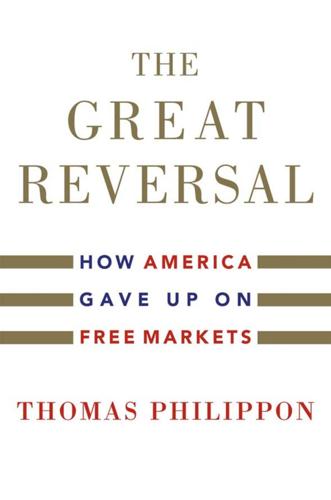
The Great Reversal: How America Gave Up on Free Markets
by
Thomas Philippon
Published 29 Oct 2019
To improve our analysis of Europe and the US, we would like to be able to directly compare the prices of goods and services in the two regions. Comparing prices across countries, however, is a lot harder than you might think. Should we expect similar goods to be sold at similar prices in different regions? In the field of economics, this is what we call the law of one price, or LOOP. The LOOP says that identical goods sold in different countries must sell for the same price (when those prices are expressed in terms of the same currency and after we take into account shipping and distribution costs). Retail prices naturally depend on distribution costs. We know from the literature on international trade that distribution costs are high and that they depend on local wages (and taxes), so we need to be careful when we compare prices across countries.
…
REAL EXCHANGE RATES AND BALASSA-SAMUELSON There are two types of exchange rates: a financial rate based on the foreign exchange (FOREX) market and a PPP rate based on local prices (International Comparison Program [ICP] PPP, or Big Mac PPP). Before we can compare prices around the world, we need to pause and think about how exchange rates are determined. The theory of purchasing power parity (PPP) says that, in the long run, the exchange rate adjusts in such a way that the law of one price (LOOP) holds for a basket of goods (see Chapter 7). What is the link between PPP and LOOP? The LOOP applies to individual goods (say, a pair of shoes), and PPP applies to the general price index (the price of a basket of goods). Clearly, if the LOOP holds for each good, then PPP will also hold for the basket of goods.
…
In this book, however, we focus on the comparison between the US and Europe, and we can assume that preferences and available goods are relatively similar. More broadly, economists have shown that pricing to market is important. For instance, George Alessandria and Joseph P. Kaboski (2011) find that “deviations from the law of one price in tradable goods are an important source of violations of absolute PPP across countries …: at the U.S. dock, U.S. exporters ship the same good to low-income countries at lower prices. This pricing-to-market is about twice as important as any local non-traded inputs, such as distribution costs, in explaining the differences in tradable prices across countries.”
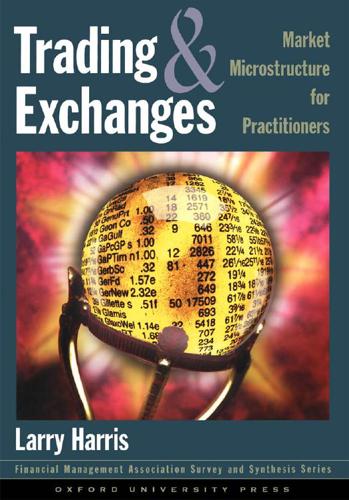
Trading and Exchanges: Market Microstructure for Practitioners
by
Larry Harris
Published 2 Jan 2003
. ◀ * * * Although arbitrageurs trade to make profits, the effect of their trading is to enforce the law of one price. The law of one price holds that identical instruments should have identical prices. For instruments that are similar but not identical, the law of one price holds that their prices should be consistent with respect to the values of their common factors. For example, if two instruments depend on the price of corn, the prices of both instruments should reflect the same price of corn. In general, the law of one price implies that all instrument prices reflect the same common factor values. Arbitrageurs unwittingly enforce the law of one price when they arrange their arbitrage trades.
…
Some Common Valuation Factors of Similar Instruments * * * ▶ The Law of One Price The prices of live cattle and of pork bellies both depend on the price of corn because feedlot operators usually produce these commodities by feeding corn to animals. Although these prices also depend on many other common factors, the price of corn is especially important because corn often represents a significant fraction of the total value of all inputs used to create these products. In the long run, when the corn prices are high, cattle and pork prices are high. The law of one price holds that the prices of live cattle and of pork bellies should both reflect the same information about corn prices. ◀ * * * Although arbitrageurs trade to make profits, the effect of their trading is to enforce the law of one price.
…
Arbitrageurs profit when prices converge so that their purchases appreciate relative to their sales. We introduced arbitrage trading strategies when we examined informed traders in chapter 10. There we described how arbitrageurs acquire information about relative values, how the price impacts of their trades cause prices to converge, and how they thereby unwittingly enforce the law of one price. This price characterization of arbitrage helps us understand how arbitrageurs trade as informed traders. This chapter continues our study of arbitrageurs. Besides being informed traders, we shall see that arbitrageurs supply liquidity, move liquidity, and produce financial products. This quantity characterization of arbitrage helps explain why arbitrage opportunities arise.
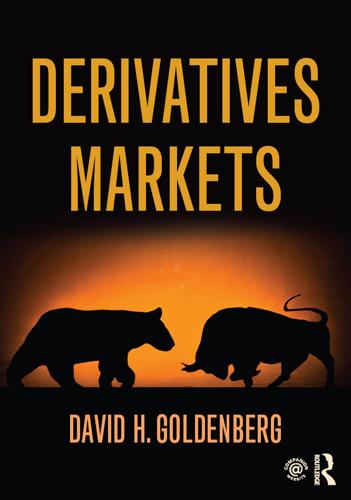
Derivatives Markets
by
David Goldenberg
Published 2 Mar 2016
In the language of financial engineering, we have replicated the payoff to the original (natural) difference strategy by a synthetic strategy which is simply to buy the appropriate zero-coupon bond. Buy because we need to generate a positive cash flow equal to +Ft,T at time T. A basic principle of finance (the no-arbitrage principle, or the law of one price) is that if you can do what we just did, then the current costs of the two strategies must be the same. Otherwise, there would be a quick arbitrage opportunity. We will get into all this soon, but let’s just follow through with what we have derived and see its pricing implications. So, consider the current cost(s) of generating these alternative payoffs.
…
In this case, the current cost to us of doing so is since we are lending, not borrowing. We are implicitly assuming that the borrowing rate is equal to the lending rate. To avoid arbitrage these two strategies, strategy 1.–2., and lending the PV of must have the same current cost, . To see this, you can construct the arbitrage opportunity directly, or use the law of one price (LOP), which follows from no-arbitrage. It follows that The ′ indicates that we are solving for the forward price in the presence of dividends. Note that this is the same pricing by replication argument that we gave in Chapter 3, section 3.5, for the no-dividend case. Also note that replication implies pricing because the replicating portfolio must have the same price as the strategy it replicates.
…
So, we do not need an independent application of the principle of no-arbitrage to show that the current cost of the replicating portfolio must be equal to the price of the derivative security. Market completeness guarantees that, because it implies no-arbitrage, in our interpretation. The usual argument given for equality between the cost of the replicating portfolio and the derivative it is replicating is that no-arbitrage implies the Law of One Price (LOP), which says that the two economically equivalent financial instruments cannot trade for different prices. This is pretty clear. If LOP did not hold, then there would be an arbitrage opportunity. The LOP construct is cute, and weaker than no-arbitrage, but not needed. Furthermore, there is no particular benefit to considering a market in which just the weaker LOP holds.
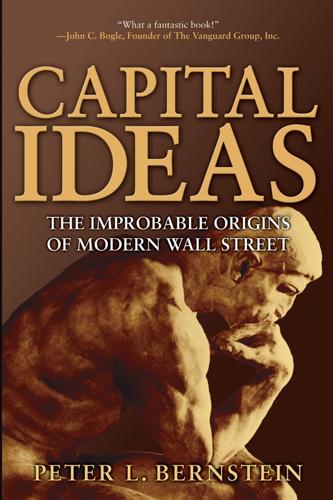
Capital Ideas: The Improbable Origins of Modern Wall Street
by
Peter L. Bernstein
Published 19 Jun 2005
To prove that the outcome they describe is the only possible outcome, Modigliani and Miller make what is probably their most ingenious contribution to the theory of finance. They seize on a common feature of competitive markets and elevate it to the level of a driving force. In so doing they make a significant advance over both Williams and Durand. That feature is known as arbitrage, or, among economic theorists, as the Law of One Price. Two assets with identical attributes should sell for the same price, and so should an identical asset trading in two different markets. If the prices of such an asset differ, a profitable opportunity will arise to sell the asset where it is overpriced and to buy it back where it is underpriced.
…
Recalling their discussions about this line of argument, Miller smiled and said, “Franco has the mind of an arbitrager, an Italian currency speculator. He always thinks in those terms.”11 Modigliani, in an understatement, observed that this approach was what made their 1958 paper “quite novel, even beyond the radical character of the core topic.”12 Even tourists ignorant of the theory of finance can turn into arbitragers. The Law of One Price was violated in the early 1980s when the foreign exchange rate for the dollar was so high that everything abroad seemed extraordinarily cheap to Americans. A Wall Street Journal reporter demonstrated that an American who flew to London, enjoyed fancy meals and hotel accommodations for a few days, and loaded up on items like sweaters, whiskey, and china, could save enough money, compared to the cost of the same items in New York City, to cover the cost of the round-trip airfare.
…
General Electric took a different path and used what is known as leverage: It issued only $60 million in common stock and borrowed $40 million by issuing bonds paying 5 percent a year interest. With only common stock outstanding, General Motor’s total earnings of $ 10 million accrue to the owners of its shares. General Electric, however, must first pay interest of $2 million on its bonds, leaving $8 million for its stockholders. What happens if the Law of One Price is violated? Suppose General Motors stock is selling for its issue value of $100 million, while General Electric stock is selling for $70 million, or $10 million more than its issue value of $60 million. Together with its $40 million in bonds, General Electric as a totality is valued in the market place at $110 million, more than the market value of General Motors.
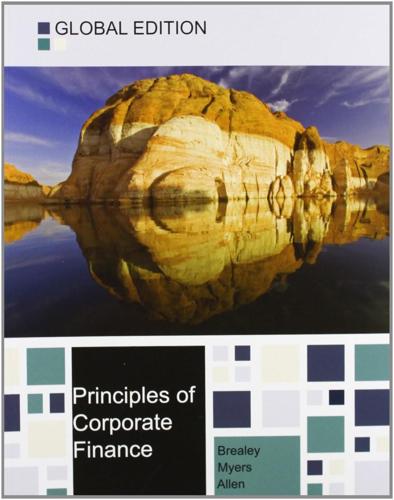
Principles of Corporate Finance
by
Richard A. Brealey
,
Stewart C. Myers
and
Franklin Allen
Published 15 Feb 2014
Spot Rates, Bond Prices, and the Law of One Price The law of one price states that the same commodity must sell at the same price in a well-functioning market. Therefore, all safe cash payments delivered on the same date must be discounted at the same spot rate. Table 3.5 illustrates how the law of one price applies to government bonds. It lists three government bonds, which we assume make annual coupon payments. All the bonds have the same coupon but they have different maturities. The shortest (bond A) matures in two years and the longest (bond C) in four. TABLE 3.5 The law of one price applied to government bonds.
…
/Agency Problems and Corporate Governance 1-3 Preview of Coming Attractions Summary Problem Sets Appendix: Why Maximizing Shareholder Value Makes Sense 2 How to Calculate Present Values 2-1 Future Values and Present Values Calculating Future Values/Calculating Present Values/Valuing an Investment Opportunity/Net Present Value/Risk and Present Value/Present Values and Rates of Return/Calculating Present Values When There Are Multiple Cash Flows/The Opportunity Cost of Capital 2-2 Looking for Shortcuts—Perpetuities and Annuities How to Value Perpetuities/How to Value Annuities/Valuing Annuities Due/Calculating Annual Payments/Future Value of an Annuity 2-3 More Shortcuts—Growing Perpetuities and Annuities Growing Perpetuities/Growing Annuities 2-4 How Interest Is Paid and Quoted Continuous Compounding Summary Problem Sets Finance on the Web 3 Valuing Bonds 3-1 Using the Present Value Formula to Value Bonds A Short Trip to Paris to Value a Government Bond/On to the United States: Semiannual Coupons and Bond Prices 3-2 How Bond Prices Vary with Interest Rates Duration and Volatility 3-3 The Term Structure of Interest Rates Spot Rates, Bond Prices, and the Law of One Price/Measuring the Term Structure/Why the Discount Factor Declines as Futurity Increases—and a Digression on Money Machines 3-4 Explaining the Term Structure Expectations Theory of the Term Structure/Introducing Risk/Inflation and Term Structure 3-5 Real and Nominal Rates of Interest Indexed Bonds and the Real Rate of Interest/ What Determines the Real Rate of Interest?
…
TABLE 3.5 The law of one price applied to government bonds. Spot rates and discount factors are given at the top of each column. The law of one price says that investors place the same value on a risk-free dollar regardless of whether it is provided by bond A, B, or C. You can check that the law holds in the table. Each bond is priced by adding the present values of each of its cash flows. Once total PV is calculated, we have the bond price. Only then can the yield to maturity be calculated. BEYOND THE PAGE ● ● ● ● ● Try It! Table 3.5: Spot rates, forward rates, and arbitrage brealey.mhhe.com/c03 Notice how the yield to maturity increases as bond maturity increases.
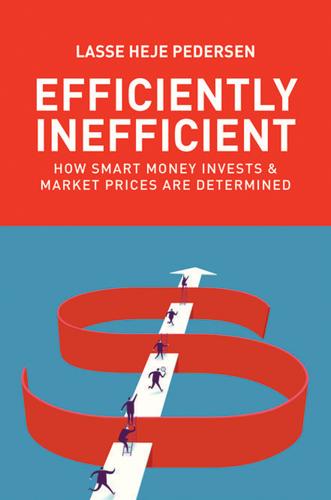
Efficiently Inefficient: How Smart Money Invests and Market Prices Are Determined
by
Lasse Heje Pedersen
Published 12 Apr 2015
While the Two-Fund Separation Theorem stipulates that all investors should hold the market portfolio in combination with cash or leverage, most real-world investors hold different portfolios, where some avoid leverage and instead concentrate in risky securities, whereas others (such as Warren Buffett) leverage safer securities. Asset returns are not just influenced by their market risk (as in the CAPM); they are also influenced by market and funding liquidity risk since investors want to be compensated for holding securities that are difficult to finance or entail the risk of high transaction costs. The Law of One Price breaks down when arbitrage opportunities arise in currency markets (defying the covered interest rate parity), credit markets (the CDS-bond basis), convertible bond markets, equity markets (Siamese twin stock spreads), and option markets. Investors exercise call options and convert convertible bonds before maturity and dividend payments when they need to free up cash or face large short sale costs (defying Merton’s Rule).
…
THOSE IN AN EFFICIENTLY INEFFICIENT MARKET Neoclassical Finance and Economics Efficiently Inefficient Markets Modigliani–Miller Irrelevance of capital structure Capital structure matters because of funding frictions Two-Fund Separation Everyone buys portfolios of market and cash Investors choose different portfolios depending on their individual funding constraints Capital Asset Pricing Model Expected return proportional to market risk Liquidity risk and funding constraints influence expected returns Law of One Price and Black–Scholes No arbitrage, implied derivative prices Arbitrage opportunities arise as demand pressure affects derivative prices Merton’s Rule Never exercise a call option and never convert a convertible, except at maturity/dividends Optimal early exercise and conversion free up cash, save on short sale costs, and limit transaction costs Real Business Cycles and Ricardian Equivalence Macroeconomic irrelevance of policy and finance Credit cycles and liquidity spirals driven by the interaction of macro, asset prices, and funding constraints Taylor Rule Monetary focus on interest rate policy Two monetary tools are interest rate (the cost of loans) and collateral policy (the size of loans) II.
…
Vigneron (2007), “Limits of Arbitrage: Theory and Evidence from the Mortgage-Backed Securities Market,” Journal of Finance 62, 557–595. Gârleanu, N., and L. H. Pedersen (2007), “Liquidity and Risk Management,” American Economic Review 97, 193–197. Gârleanu, N., and L. H. Pedersen (2011), “Margin-Based Asset Pricing and Deviations from the Law of One Price,” The Review of Financial Studies 24, 1980–2022. Gârleanu, N., and L. H. Pedersen (2013), “Dynamic Trading with Predictable Returns and Transaction Costs,” Journal of Finance 68, 2309–2340. Gârleanu, N., and L. H. Pedersen (2014), “Dynamic Portfolio Choice with Frictions,” working paper, University of California, Berkeley.
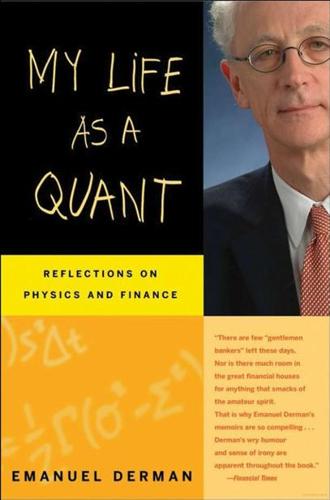
My Life as a Quant: Reflections on Physics and Finance
by
Emanuel Derman
Published 1 Jan 2004
Similarly, a three-year Treasury bond is a collection of six zero-coupon bonds respectively maturing every successive six months over the next three years. Decomposed in this way, the bonds' ingredients are shared: Both contain the first six zero-coupon bonds. Therefore, in modeling the three-year bond, you are also implicitly modeling parts of the five-year bond. In essence, Ravi's model allowed impermissible violations of the law of one price that lies beneath all rational financial modeling. This law demands that any two securities with the same final payouts must have the same current value. Now, there is a combination of short-term options on long-term bonds that has exactly the same payout as a short-term bond, and therefore, the combination of options should have the same theoretical value as the short-term bond, despite their formally different names.
…
We could then use the same calibrated tree to value any security whose payouts in the future had a known dependence on interest rates by averaging those payouts over the distribution. In particular, we could value the payout of an option of any expiration on a bond of any maturity. It was particularly attractive that our new model satisfied the law of one price. Our tree functioned as a computational engine that produced the current value of a security by averaging its future payouts; you put future payouts onto the end of the tree, cranked the handle that averaged and then discounted them over the interest rate distribution, and ended up with the current price.
…
Our traders' intuition had been honed on the old model, and they were sensibly conservative about switching-it is never wise to start using something new until you understand how well it glues on to what you used before. You need a feel for a model before you can begin to rely on it. Therefore, some of the sales assistants in Financial Strategies began to test it, and slowly convinced themselves that it satisfied the law of one price, something that was theoretically obvious to us but not yet practically clear to them. I was tremendously excited by what we had done. Still at heart a physicist, and still philosophically naive about financial modeling, I halfthought of what we had built as a grand unified theory of interest rates, and imagined we could use it to value every interest rate-sensitive security in the universe.
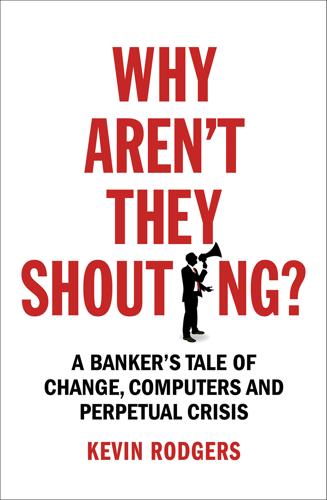
Why Aren't They Shouting?: A Banker’s Tale of Change, Computers and Perpetual Crisis
by
Kevin Rodgers
Published 13 Jul 2016
some brave soul ventured, finally. ‘Good try …’ came back the reply (the courageous student beamed for a split second) ‘but completely wrong. It is the law of one price.’ Thirty or so biros scratched that phrase onto notepads. It was 1989 and I was at London Business School in the first lesson of an elective class called ‘Options and Futures’. At that stage, I had no plans to be a banker – regardless, I found the lecture and the ones that followed it fascinating. The law of one price, we were told, is that a security must have the same price wherever it trades otherwise arbitrageurs will step in and close the gap.
…
Built upon the decades-old observation that it was impossible to beat the stock market consistently and that past price activity gave no clue about future prices, efficient market theory held that asset prices embodied all available information – that they were, in a sense, ‘right’.fn1 The idea was that, if they were not, informed market participants would push prices to where they ‘should’ be in the face of uninformed ‘noise traders’. In a way, it was an expansion of the idea underpinning the law of one price. But, instead of simply claiming that asset prices were correct if they were in conformity with other assets so that there were no arbitrages, it claimed that asset prices were right in and of themselves. Markets were self-correcting. Individuals may be klutzes, but the crowd was wise and rational.
…
., 197–8 dividends, 91, 147, 212 Dodd–Frank Act (2010), 209, 230 Dostoyevsky, Fyodor, 30 dot-com boom (1997–2000), 37, 146, 207 double knockouts, 107 Dow Jones, 79, 138, 147 Dresdner Bank, 20, 48 drive-bys, 17, 20, 68, 132 E e-trading, 55, 57, 67–73, 75, 84, 122 efficiency improvements, 169–70 efficient market theory, 203 Electronic Broking Services (EBS), 24–8, 31, 32–3, 42, 45, 46, 48, 50, 59–60, 63, 69–70, 71, 72, 73, 77, 83, 188 Electronic Communication Networks (ECNs), 59, 61, 66, 193 elephant deals, 38 email, 169, 191, 195, 197, 199 emerging markets, xi, 6, 29–30, 116–43, 147, 228 Empire State Building, New York, 130 ‘Engine’, 127–31, 135, 139, 157, 167, 169 engineering, x–xi, 10 Enron, 156 equities, viii, 23, 50, 66, 71, 74, 80, 89, 95, 146, 193, 207, 211, 235 circuit breakers, 80 colocation, 71 sales-traders, 50, 78 euro, 22, 28, 31, 37, 53, 69, 80, 81–3, 189 Euromoney, 36, 41, 47, 51–2, 54, 55, 56, 57, 64, 66–8, 70, 77, 81, 233 Europe, Middle Eastern and African (EMEA) markets, 117–18 European Union (EU), 102, 196, 201, 203, 207, 210, 212, 230 Exchange Rate Mechanism (ERM), xi, 22, 102–3, 106, 123, 130, 136, 207, 224 Liikanen Report (2012), 230 Maastricht Treaty (1992), 102 Market Infrastructure Regulation (EMIR), 209 ‘Every Day I Write the Book’ (Elvis Costello), 140 Excel, 107, 221 exchange rates, 9, 11–13, 14, 17, 32, 100 exotic derivatives, 105–11, 127 F ‘F9 monkeys’, 221 Fannie Mae, 90 Federal Reserve, xii, 90, 109, 143, 187, 202–6, 212 Federal Reserve Bank of Chicago, 193 fibre-optic cables, 77, 84 FIFA (Fédération Internationale de Football Association), 167 Financial Conduct Authority (FCA), 190 Financial Services Act (2013), 210 Financial Stability Board (FSB), 212, 214, 216 Financial Times, 116, 187 financial transactions tax, 216 fines, 181, 190, 196 First Chicago, 168 Fitch, 155 fixings, 181, 187–92, 198 Flannery, Mark, 215 Flash Crash (2010), 79–80, 193 Florence, Italy, 78 Florida, United States, 116 football, 10–11, 43, 83, 117, 167, 195 Forbes, 234 foreign direct investment (FDI), 136 foreign exchange (FX), viii, xi, xii, xiv, 3–28, 29–55, 56–84, 89, 90–1, 95–114, 115–44, 145, 158–9, 165, 174, 175, 180, 181–94, 196–7, 210, 213, 222–3, 224, 225, 233 aggressive prices, 14–15 Application Program Interfaces (APIs), 59–60, 66, 71, 78 Autobahn, 48–51, 53, 64, 68, 69–70, 78, 225 Automated Risk Manager (ARM), 53–5, 56–9, 64, 67, 70–1, 72, 73, 76, 79, 101, 129, 169 banging the close, 190 BARX, 64, 65 bidirectional flows, 69 calls, 19–21, 23, 27, 51, 53, 98, 99 carry trade, 108–10 Clackatron, 32–3, 54, 91 colocation, 71 complex risk, 159, 222 corporations, 9, 36, 61, 76, 96, 109–10 costs, 42 currency pairs, 9, 12, 14, 46, 53, 75, 80 decimalisation, 63–6, 67, 73, 77 drive-bys, 17, 20, 68, 132 Electronic Broking Services (EBS), 24–8, 31, 32–3, 42, 45, 46, 48, 50, 59–60, 63, 69–70, 71, 72, 73, 77, 83, 188 Electronic Communication Networks (ECNs), 59, 61, 66, 193 elephant deals, 38 emerging markets, xi, 6, 29–30, 116–43 Engine, 127–31, 135, 139, 157, 167, 169 fixings, 181, 187–92, 198 forwards trades, 10, 52, 77, 92, 121 hedge funds, 9, 29, 36, 57, 61, 66, 69–74, 77, 81, 120, 123, 131–5, 141–3 hedging, 97, 108, 117–18, 190, 225 high frequency trading (HFT), 57, 63, 73, 74, 75, 76, 77, 80, 84, 180, 194 LIBOR scandal (2012), 181–7, 188, 189, 190, 197, 198 liquidity, 18–19, 21, 27, 80–1, 83, 233 making rates, 13–21, 27, 38–9, 50, 96 market makers, 18–19, 21, 83 market shares, 41, 48, 51–2, 54, 55, 65, 66–8, 70, 77, 81, 169 ‘mine-and-yours’, 15–16, 18, 19, 192 Monte Carlo pricing, 111–14 off system trades, 111 OPTICS, 101, 103, 131, 153, 170 options trade, 10, 13, 20, 23, 27, 33–4, 38, 43–7, 49, 77, 95–114, 222–3 over-the-counter (OTC) market, 96, 209 passive v. active strategies, 17–19 pay, 43 pension funds, 9, 61, 76, 96 pips, 13, 18, 41, 65, 73, 77 Piranha, 48 pre-deal services, 8 prime brokerage (PB), 61–3, 66, 120, 209 production credits, 49–50 proprietary trading, 22, 31, 39, 46–7, 125 relative value trades, 72–3 retail trade, retail aggregators, 21, 61, 66, 74, 75, 79, 82–3 Reuters Dealing machines, 23, 25–8, 31, 32, 50, 59, 73 Revolutionary Application Program Interface Development (RAPID), 56–9, 77, 101 risk, 15, 16, 19, 20–1, 24, 29, 31, 38, 39, 40, 44–5, 49, 51, 53, 62, 77, 95, 96, 98, 99, 101–8, 110–14, 121–31, 135, 192 risk management systems, 24, 40, 44–5, 53–5, 56–9, 64, 67, 70–1, 72, 73, 76, 77, 79, 99, 101–8, 110–14, 121–31, 135 rogue systems, 79–80 salespeople, 8–9, 11, 13–15, 20, 24, 28, 29, 33, 35, 37, 46, 47–52, 68, 96, 120 settlements, 5, 24, 40, 44, 51, 61, 101, 209 screen scraping, 32–3, 50, 59 skewed prices, 18, 19, 73, 96, 98 slippage, 188–9 speculation, 21, 31, 102–14 spot, 3–28, 33–4, 42–4, 46, 48–55, 67, 76, 77, 91, 96, 97, 98–9, 108, 111, 118, 122, 159, 165, 169, 188, 189, 199, 201, 222 spread, 12, 14–15, 16, 18, 19, 31, 41–2, 44, 45, 53, 55, 61, 64, 68, 69, 75, 80, 96, 225 traders, 3–28, 33, 35, 38, 41, 43, 46, 50, 52–4, 67, 73, 76, 78, 96, 99, 122, 189 Triangle arbitrage, 31–2, 42, 54, 91, 122 two-way pricing, 11–21, 23, 99 volatility, 14, 26, 46–7, 74–5, 80, 98, 137 wallet, 40 window, 118, 137, 188 WM/R, 187–8 zero coupon bonds, 118–32, 134, 138–43, 149, 152, 158, 159, 173 forward rate agreements (FRAs), 182 forwards trades, 10, 52, 77, 92, 121 Four Seasons, The, 3–5, 9 France, 6–7, 35, 37, 41, 46, 55, 64, 65, 77, 102, 140, 159, 207 Freddie Mac, 90 free market economics, 202–6 FTSE 100, 147 Fuld, Dick, 226 FX All, 59, 78 FX-fixing scandal (2013), 181, 187–92, 198 FXCM, 82–3 G G20 nations, 209, 212, 216 gambling, 31, 102–14 gamma, 97–8, 100 Gaussian copula, 158 geekiness, x, 10, 43, 223 geopolitics, 229 Germany, vii–x, xii, xiii, 16, 28, 36, 44, 54, 75, 144–5, 159, 167, 180, 200, 204 mark, 9, 96, 97, 99, 100, 104 Gibson Greetings, 109 GKOs (rouble-denominated bonds), 118–32, 134, 138–43, 149, 152, 158, 159, 173 Glass–Steagall Act (1933), 168, 201, 230 globally systemically important banks (G-SIBs), 216 Goldman Sachs, 23, 146, 198, 216, 230 Commodity Index (GSCI), 148 Google, 78, 234 GQ, 141 Gramm–Leach–Bliley Act (1999), 168, 201 Great Depression (1929–39), 168 Great Financial Crisis (2007–8), xiii, xiv–xv, 74–5, 87–90, 114, 124, 163, 172–5, 179–80, 196, 204–6, 207, 217, 219, 220, 223, 227–8 Greece, 82, 92, 181 Greeks, 98, 99, 101, 105, 107, 110, 111, 112, 114, 127, 129, 150, 157, 158, 182, 219 Greenspan, Alan, 202–6 GSA, 233 Gulf War (1990–1), xi, 22, 95 Gulliver, Stuart, 231 H ‘haircuts’, 132 Haldane, Andrew, 173 hand signals, 16 Hang Seng, 137 Harrison, William, 168 Harrow School, London, 149 Harvard University, 166 La Haye Sainte, Belgium, 10 hedge funds, xi, 9, 29, 36, 57, 61, 66, 69–74, 77, 81, 97, 114, 116, 122, 123, 131–5, 141–2, 164, 171, 172, 201, 229, 233 hedging, 94, 95, 97, 108, 117–18, 144, 145–6, 157, 190, 225, 226 delta hedging, 97 Hellwig, Martin, 211 Henry, John, 28 Herrhausen, Alfred, 226 high frequency trading (HFT), 57, 63, 73, 74, 75, 76, 77, 80, 84, 180, 194 Hodgkin, Howard, 195 Holder, Noddy, 232 Hong Kong, 137 Hotspot, 59 Hounslow, London, 193 HSBC, 216, 229, 231 Hussein, Saddam, 22, 95 I ICAP, 73 Iceland, 167, 174 identity theft insurance, 231 Immendorff, Jörg, 56 indexes, 147–50, 153–4, 157, 163, 190 India, 149 Indonesia, 135, 137, 139 IndyMac, 90 initial margin, 120, 132 insurance, 93, 151, 164, 168, 172, 174, 229 Intelligent Flow Monster, 146 interest rates, viii, 7, 10, 92, 108–10, 135, 225 carry trade, 108–10 derivatives, 104, 132, 182–6, 214 futures, 182 LIBOR (London Interbank Offered Rate), 109, 181–7, 188, 189, 190, 197, 198 swaps, 8, 92, 182–4 International Monetary Fund (IMF), 132, 135, 140, 211, 214, 230 International Swap Dealers Association (ISDA), 152, 153 Internet, xii, 5, 42, 76, 78, 169, 191–2, 195, 197, 199, 228, 233–5 investment banking, 36, 87, 110, 133, 145–6, 151, 158, 165–8, 229–30 iPhone, 5, 228 Iran, 181–2 Iraq, xi, 22, 95 Israel, 29, 138 Italy, 10, 13, 22, 78, 115–16, 141 lira, 22, 102–3, 123 iTraxx, 153 J Jagger, Mick, 87 Japan, 61, 72, 79, 159 yen, 9, 14, 17, 28, 71–2, 75, 79, 80, 136, 184 JPMorgan Chase, 131, 150, 158, 163, 168, 182, 197, 216, 229, 231, 23 J. P. Morgan, 168 jumper analogy, 11–12, 17, 31, 45, 72, 80, 91 K Keynes, John Maynard, 205 Knight Capital, 79 Korea, 120, 135, 139 Kuwait, xi, 22, 95 L Labour Party (UK), 120, 201 lattice methods, 112, 150, 157 Lava FX, 59 law of one price, 91 Lehman Brothers, 32, 75, 90, 161, 163, 167, 172–4, 179, 180, 217, 226, 230, 232 LendingClub, 234 leverage, 60, 81, 83, 90, 104–5, 109, 120, 124, 132, 134, 149–50, 172–3, 208, 210, 219, 228 liabilities, 124 libertarianism, 202 LIBOR (London Interbank Offered Rate), 109, 181–7, 188, 189, 190, 197, 198 light touch regulation, see principles-based regulation Liikanen Report (2012), 230 liquidity, 9, 18–19, 21, 27, 80–1, 83, 138, 148, 153, 172, 174, 184, 185, 209, 210, 233 Lisbon, Portugal, 173 Liszt, Franz, 60 loans, 7–8, 89, 92, 94, 119, 120, 124–5, 151–2, 154–6, 160–1, 163, 171, 173, 181–2, 231 logarithms, 128 London, England, vii–x, xi, 3, 9, 15, 35, 69, 72, 76, 79, 91, 120, 121, 137, 140, 193, 199, 202, 209 London Business School, 91 London Clearing House, 209 London Zoo, ix Long-Term Capital Management (LTCM), xi, 29, 114, 116, 122, 131–5, 142–3, 156, 172, 202 lookbacks, 107 Lord’s Cricket Ground, London, 87 Los Alamos County, New Mexico, 111 Lowenstein, Roger, 122 M M.
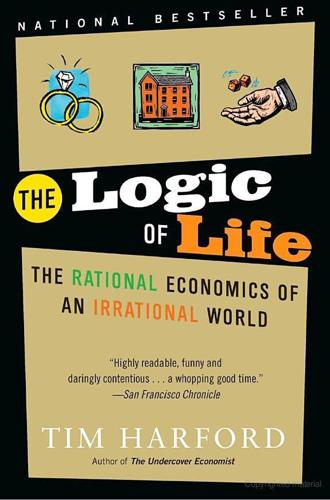
The Logic of Life: The Rational Economics of an Irrational World
by
Tim Harford
Published 1 Jan 2008
He’ll get $99.99; her one-cent profit is better than nothing. The trouble doesn’t end there. Economists talk about “the law of one price,” which says that identical products on offer at the same time, in the same place, with the prices clearly visible will go for the same price. This is the Marriage Supermarket, so that’s exactly the situation the women find themselves in. No matter what deals are agreed, there will always be one girl left over, offering to pair up for just one cent. The law of one price says one cent is what all of them will get: Anyone on the verge of getting a better offer will be undercut.
…
The intuition is straightforward, though. Just one “leftover” woman can provide an outside option for every single man and spoil the bargaining position of every other woman. That’s how it would work in the Marriage Supermarket. You may have noticed some minor differences in reality. The conditions for the law of one price are never perfectly met. The bargaining process is not quite as calculating, although it is probably just as brutal. Most important, because the Marriage Supermarket measures the benefits of marriage in dollars, those benefits are easily transferred from one party to another. In reality, it’s not as easy for suitors to bid against one another as marriage prospects (“I’ll match Brian’s guarantee of three orgasms per week, and add in at least one candlelit dinner”)—although the marriage of twenty-six-year-old former Playboy centerfold Anna Nicole Smith to eighty-nine-year-old billionaire J.
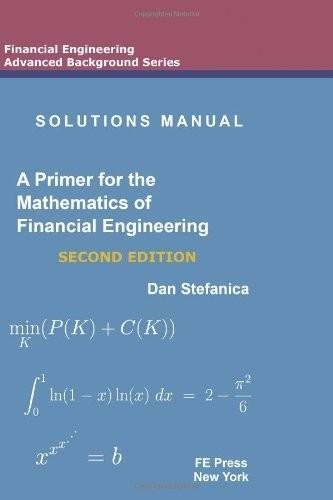
Solutions Manual - a Primer for the Mathematics of Financial Engineering, Second Edition
by
Dan Stefanica
Published 24 Mar 2011
The value C of the call at time 0 cannot be more than Se- q1 , the present value at time 0 of one unit of the underlying asset at time T , if the dividends paid by the asset at rate q are continuously reinvested in the asset. Also , the value C of the call option must be greater than O. Thus , 。三 C 三 Se-qT. (3.19) < P < Ke- rT . A more insightful way to prove these bounds is to use arbitrage arguments and the Law of One Price. Consider a portfolio made of a short position in one call option with strike K and maturity T and a long position in e- qT units of the underlying asset. The value of at time 0 of this portfolio is V(O) = Se- qT - C. If the dividends received on the long asset position are invested continuously in buying more units of the underlying asset , the size of the asset position at time T will be 1 unit of the asset.
…
If the dividends received on the long asset position are invested continuously in buying more units of the underlying asset , the size of the asset position at time T will be 1 unit of the asset. Thus , V(T) = S(T) - C(T) = S(T) - max(S(T) - K , 0) since , if S(T) > K , then V(T) = S(T) 一 (S(T) - K) = K , and , if S(T) 三 K , then V(T) = S(T) 三 K. From the Generalized Law of One Price we conclude that V(O) = Se- qT - C 三 Ke-y-T? and therefore Se- qT - K e- rT 三 C , which is the left inequality from (3.14). All the other inequalities can be proved similarly: • To establish that C ~二 Se- qT , show that the payoff at maturity T of a portfolio made of a long position i丑 e- qT units of the underlying asset at time o and a short position in the call option is nonnegative for any possible values of S(T); • To establish that K e- rT - Se- qT ~二 P , show that the payoff at maturity T of a portfolio made of a long position in e- qT units of the underlying asset at time 0 and a long position in the put option is greater than K for any possible values of S(T); • To establish that P ~二 K e- rT , show that the payoff at maturity T of a portfolio made of a short position in the put option and a long cash position 口 of Ke- rT at time 0 is nonnegative for any possible values of S(T).
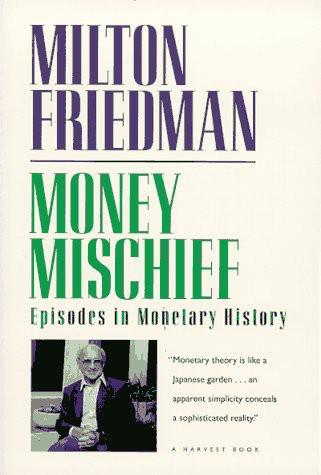
Money Mischief: Episodes in Monetary History
by
Milton Friedman
Published 1 Jan 1992
Loren Brandt and Thomas Sargent (1989) regard this additional evidence as suggesting that the episode was one of "free banking" on a specie standard in which the higher real price of silver meant that a smaller physical stock of silver was necessary to support the same total stock of money in nominal units. The price deflation, they suggest, was produced by the "law of one price," that is, arbitrage between international and domestic prices, rather than by monetary contraction. And prices, they conjecture, were sufficiently flexible to insulate the real economy from the price deflation produced by the "law of one price." The higher value of silver was simply a boon to holders of silver, and to benefit from that boon they exported the amount no longer needed to support the money stock. They conclude that "the U.S. silver purchase program did not set off a chain of bad economic events which eventually forced China off silver and onto a fiat standard.
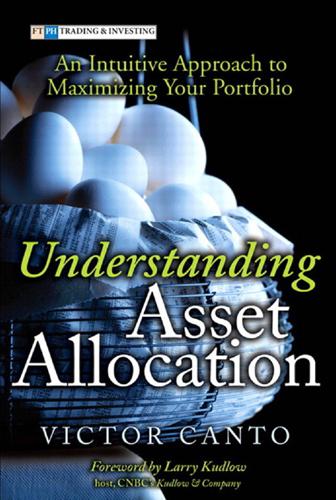
Understanding Asset Allocation: An Intuitive Approach to Maximizing Your Portfolio
by
Victor A. Canto
Published 2 Jan 2005
The correlation’s source, according to the article, is industries seem to be moving in harmony around the world.2 My interpretation of the author’s conclusion is people who aim at diversifying their portfolios must pay as much attention to industry groups as they do to global locations. I have been making this point for the past few years; such a correlation trend is entirely predictable. The high correlation among industry returns across countries is easily explained in terms of the “law of one price,” or purchasing power parity (PPP). Putting these similar concepts together, the high correlation is explainable because identical things’ prices across countries tend to be equal when expressed in the same currency. To the extent the correlation among industries is not perfect, however, one must conclude PPP is not perfect and PPP violations occur.
…
This statistical technique is usually used to measure a manager’s performance against a benchmark. interest rate parity Relationship that must hold between the spot rate currencies’ interest rate if there are to be no arbitrage opportunities. interest rate spread The difference in yield between two distinct securities, such as corporate bonds and government securities. investor’s horizon The time length a sum of money is expected to be invested. law of one price The economic rule that states that, in an efficient market and absent transaction or transportation costs, a security and/or a commodity must have a single price, no matter how that security is created. leverage buyouts (LBOs) A transaction used to privatize a public corporation financed through debt, such as bank loans and Treasury bonds (T-bonds).
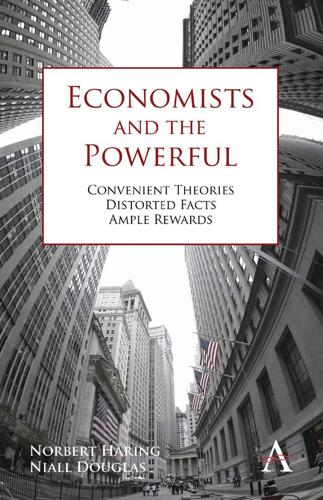
Economists and the Powerful
by
Norbert Haring
,
Norbert H. Ring
and
Niall Douglas
Published 30 Sep 2012
Workers do not exist in most neoclassical models of the labor market. There is only labor in those markets – labor that consumers sell if the price is right and do not sell if the price is too low. In reality, the firm employs workers, not their labor. The presence of market power, established in Chapter 4, implies that the law of one price for labor does not hold. The result is a dichotomy of good jobs and bad jobs for similar workers. Thus luck is very important for earnings and careers, rather than individual merit. Labor market institutions, and legal restrictions on voluntary trade, work very differently on such a real labor market than in the fairy-tale labor market that textbooks like to use.
…
Just as workers will demand a higher wage for travelling to an otherwise identical employer who is further away, they will demand more money if they are expected to do work which they do not like as much (Bhaskar, Manning and To 2002). Empirical research has provided ample direct and indirect proof of the importance of market power on the labor market. An indirect proof lies in the fact that the law of one price routinely does not hold. If competition worked as neoclassical theory assumes, there would be one price for labor of a given type and quality. However, there is a large body of literature dating back many decades that shows that wage rates can be very different for a given type of work in a given city.
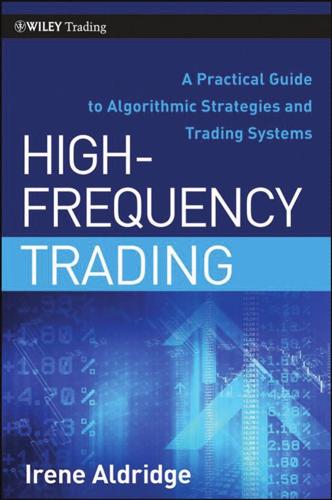
High-Frequency Trading: A Practical Guide to Algorithmic Strategies and Trading Systems
by
Irene Aldridge
Published 1 Dec 2009
However, profit-taking opportunities still exist for powerful high-frequency trading systems with low transaction costs. Indexes and ETFs Index arbitrage is driven by the relative mispricings of indexes and their underlying components. Under the Law of One Price, index price should be equal to the price of a portfolio of individual securities composing the index, weighted according to their weights within the index. Occasionally, relative prices of the index and the underlying securities deviate from the Law of One Price and present the following arbitrage opportunities. If the price of the index-mimicking portfolio net of transaction costs exceeds the price of the index itself, also net of transaction costs, sell the index-mimicking portfolio, buy index, hold until the market corrects its index pricing, then realize gain.
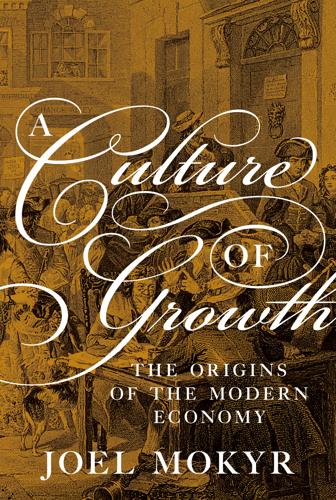
A Culture of Growth: The Origins of the Modern Economy
by
Joel Mokyr
Published 8 Jan 2016
But overall, the system worked well as a competitive market for ideas. After 1650, the power of conservative forces to hold back new ideas dissolved north of the Alps and the Pyrenees. That said, unlike highly competitive markets for goods or labor, the market for ideas does not invariably converge to an “equilibrium outcome,” comparable to the law of one price in markets for goods. The reason is that even if the market for ideas is highly competitive, it may be difficult for “consumers” to choose on the basis of content alone, because knowledge is insufficiently tight and the evidence or data are inconclusive. In that case the market generates multiple solutions.
…
Such was the case in medicine, where best-practice knowledge before 1870 could not produce a tight explanation of infectious disease. But in a well-functioning market for ideas, content bias—the willingness to be persuaded and accept what seems true—should be decisive in matters that can be verified by the best instruments and satisfy the rhetorical conventions of the time.21 In that case something akin to the law of one price should obtain. Hence, when such cultural entrepreneurs as Lavoisier, Darwin, and Pasteur proposed radically new views of natural phenomena, the evidence and logic were judged to be persuasive by the rhetorical standards of their age. Notwithstanding skepticism and resistance, their ideas became eventually accepted and were considered to be sufficiently tight at least among those who mattered for further progress.
…
., 63, 73, 241 on British science, 242 Kuhnian anomaly, 162 Kumar, Deepal, 215 Kuran, Timur, 53, 54 Kurz, Joachim, 313 La Mettrie, Julien, 171, 178 La Peyrère, Isaac, 207 labor-saving innovations, 289 Labrousse, Elizabeth, 175 Lactantius, Lucius, 153 Lagrange, Joseph Louis, 110, 112 Lalande, Joseph Jerome, 107 Lamb, Marion, 12, 43, 48 Landa, Janet Tai, 122 Landes, David S., 40, 47, 233, 268, 297, 312, 310, 320 Laplace, Pierre Simon, 113, 115, 242 Lapland expedition, 107, 211 Lasch, Christopher, 248 Lates, Jacob Immanuel, 256 Latin, 170, 258 latitudinarianism, 113 Lavoisier, Antoine, 158, 220, 241, 272, 280 law of nature, universal, 318 law of one price, 157 laws of gravitation, Newton’s, 107 Le Roy, Loys (Louis), 73, 248 learned societies, 173 learning, horizontal channels, 35 l’Écluse, Charles de, 206 Lecoq, Anne-Marie, 250 lectures, scientific, 223 Leers, Reiner, 208 legitimacy, 202 and patronage, 205 Leibniz, Gottfried Wilhelm, 68, 100, 104, 106, 112, 114, 193, 199, 202, 208, 214, 227, 245 inventions of, 242 priority dispute with Newton, 108 Leibnizians, 211 Leighton, Wayne A., 10, 59 LeMaistre, Joseph, 79 Lenin, Vladimir, 52 Leopold of Tuscany, Prince, 281 Leslie, Michael, 86 Leuven, 175 Levere, Trevor, 222, 335 Levin, Daniel Z., 191 Levine, Joseph M., 156, 250, 253 Levine, Robert, 40, 140 Leyden, 95, 174, 178 Leyden, University of, 106, 173, 179, 182, 212 l’Hôpital, Marquis, 106 Li, Jin, 295 Li Gong, 303 Li Shizhen, 333 Li Ye, 299, 301 Li Zhi, 323, 327 libertas philosophendi, 197, 260 Lilienthal, Otto, 257 Lillard, Dean R., 35, 38 Lin, Justin, 289, 322 Lindberg, David C., 133 Linnaeus, Carl, 275 Lio Xanting, 333 Lipsius, Justus, 182 Lister, Martin, 87 literacy, 36, 80 124, 126, 127 in China, 292 Liu Bingshong, 301 Liu, James T.C., 292, 308 Livingstone, David N., 136 Lloyd, Geoffrey, 304, 306, 319 Lloyd, William, 94 Locke, John, 68, 69, 78, 111, 116, 176 reputation on the Continent, 243 Lodwick, Francis, 94 London, 72, 74, 97, 174, 222, 281 Long, Pamela, 72, 137, 140 longitude at sea, 271 López, Edward J., 10, 59 Louis LeGrand school, 130 Louis XIV, King, 109, 204, 234 Louvain, 174 Louvain, University of, 261 Louvois, Marquis de, 82 Lower, Richard, 91 loyalty, 121 Lucretius, 317 Luddism, 65 Lully, Jean-Baptist, 204 Lunar Society, 222 Luther, Martin, 60, 63, 65, 68, 159, 170, 214, 323 Lutheranism, 244 Lux, David S., 241 Lynch, William T., 88 Lyons, Anthony, 51 Ma, Debin, 287, 291, 304, 315 Macartney, Lord George, 313, 334, 335 Macaulay, Thomas Babington, 97 MacFarlane, Alan, 18 Machiavelli, Niccolo, 205 MacLaurin, Colin, 78, 83 MacLean, Ian, 187, 197, 212, 214 MacLeod, Christine, 109 magic, 211 in Bacon’s thought, 75 magical doctrines, disappearance of, 220 magicians, 75 magnetism, 336 Magnol, Pierre, 234 Maharal of Prague, 257 mail services, improvements in, 195 Mairan, Jean Jacques d’Ortous de, 275 maize, 163 Malcolm, Noel, 183 Malebranche, Nicolas de, 106 Malesherbes, Guillaume-Chrétien de, 178 Malherbe, Michel, 96 Malpighi, Marcello, 156 Malthus, Thomas Robert, 311 Malthusian forces, 315 Manardi, Giovanni, 147 Manchu suppression, 327 Mandarinate, and the kaozheng school, 323 Mandeville, Bernard de, 84 Mantua, 205 Manuel, Frank, 100 Mao Zedong, 52, 337 map makers, 204 Marburg, 245 Marcuse, Herbert, 60 Margóczy, Daniel, 145, 153, 195, 204, 217 marine chronometer, 26, 83, 271 Mariotte, Edme, 73 market for ideas, 62, 64, 67, 97, 99, 101, 154-160, 172, 175, 182, 187, 188, 192, 200-202, 210, 212–216, 218-220, 234, 261, 265, 267, 268, 305 and Industrial Enlightenment, 244 and Republic of Letters, 208 Bacon’s legacy in, 272 barriers to entry to 165, 178 formal institutions in, 280 fragmentation and 172 idea of progress in, 247 in China, 209, 294, 296, 298-311, 317, 319, 324, 339, 341 in Europe, 314 institutional underpinning of, 198, 214 mathematics in, 213 persuasion in, 190, 209 transnationality of, 107 market integration, in China and Europe, 291 marketplace for ideas, 200 in China, 319 see also market for ideas marriage market, 62 Marx, Karl, 52, 60, 63, 65, 79, 266 Marxism-Leninism, 64 Mary Tudor, Queen, 171 Masonic lodges, 222 mathematical methods, in science, 279 mathematicians, 204 mathematics, 147, 190 in China, 328 in experimental science, 105 in Newton’s work, 103 in scientific method, 74, 104 Newton’s effect on, 106 role of, 213 mathematization, 55, 217 of nature, 82 Mathias, Peter, 268 Maupertuis, Pierre Louis de, 107, 110, 211, 282 Maurice of Nassau, Prince, 204 Maximilian II, Emperor, 206 Maximilian of Bavaria, Duke, 207 Mayr, Ernst, 30, 31 Mayr, Otto, 104 Mazzotti, Massimo, 110 McClellan, James E., 195, 196 McCloskey, Deirdre, 5, 7, 17, 20, 23, 45, 65, 97, 119, 121, 122, 136, 155, 197, 246, 269, 289 on education, 295 McDermott, Joseph P., 294, 310, 333, 334 McGuire, J.E., 252 McMains, H.F., 145 measure of force, Newton’s, 112 mechanical arts, dignity of, 137 mechanical science, 112 mechanistic universe, 221 medicine, 157, 278, 336 Baconian influence on, 90 in China, 328 Mei Wending, 325, 327 Meisenzahl, Ralf, 119, 283 Meissen, 145 Melanchthon, Philipp, 170 Melton, James Van Horn, 199 memes, 46 Mengzhi (Mencius), 298, 302, 319, 330 mercantilism, age of, 193, 204 Merchant, Carolyn, 78 Merchants, demand for information of, 161 Mercury, or, The Secret and Swift Messenger, 94 meritocracy, in China, 303 Mersenne, Marin, 86, 95, 104, 130, 160, 194, 208, 239, 240, 243, 280, 281 Merton, Robert K., 91, 170, 201, 202, 227-231, 234, 245, 276, 277 Merton thesis, 236, 237 Meskill, John, 292 Mesoudi, Alex, 22, 24-26, 28 Métailié, Georges, 326, 328, 333 metallurgy, 91 microscopes, 83, 162 Middle East, 274 Milan, 205 Mill, John Stuart, 13, 47 Millar, John, 68 millenarianism, 266 Miller, Patrick, 239 Miller, Peter N., 95, 137, 162, 194, 198, 200 Milton, John, 156 mindful hand, 139 Ming dynasty, 294, 300-302, 305, 309, 311, 324, 327, 335, 336 Minim order, 239 mining, 91 Mishna, 128 Mitch, David, 125 Mitchell, Wesley Claire, 68 Mitsukuni, daimyo, 311 mixed mathematics, 130 Moav, Omer, 22, 121 model-based bias, 109, 214 moderns, 101 triumph of, 254 Mohammed, 60 Mohism, 299 Moivre, Abraham de, 233 Mokyr, Joel, 7, 27, 28, 48,81, 94, 119, 121, 128, 138, 175, 183, 185, 196, 227, 244, 259, 260, 268, 278, 283, 289, 316, 332 Moldova, 126 Molière, 207 monasteries, and technological progress, 136, 142 Mongol invasions, 309 Mongols, 314 Monod, Jacques, 32, 62 Montaigne, Michel de, 96, 157 Montes, Leonidas, 103 Montesquieu, Charles Louis de Secondat, 68, 276 Montpellier, 174 Moore, James R., 85, 230 morality, general vs. limited, 18, 296 Moran, Bruce T., 173, 205, 207 Moravia, 171 Moray, Sir Robert, 89 More, Hannah, 124 Morris, Ian, 47, 288, 307, 309, 314, 328 Mosse, George L., 238 Mote, F.W., 292, 297, 299, 307, 312, 327, 335 Mughal India, 291 Muir, Edward, 130, 174, 281 Mulligan, Lotte, 237 Murphy, Daniel, 235 Muslim traditions, 256 Musschenbroek, Petrus, 106 Musson, A.E., 79, 265, 268 mysticism, 211 Nakayama, Shigeru, 149 Napoleon, 115 natural philosophy, application of, 223 Naudé, Gabriel, 207 Nedham, Marchamont, 91, 249, 252 Needham, Joseph, 148, 233, 287, 297,299, 300, 302, 308, 310, 314, 316, 318, 322, 324, 329, 336 on scientific laws, 337 Needham puzzle, 289, 318 Needham question, 287-289 Neher, André, 257 Nelson, Richard R., 22, 123 neo-Confucianism, 299, 303, 324 triumph of, 308 Netherlands, 17, 53, 95, 122, 167, 172, 174, 176 networks, 86. 87, 92, 120, 122, 122, 128, 129, 180, 181, 183, 186, 187, 191-196, 200, 201, 215, 216, 219, 281, 282, 296, 310, 328 epistolary, 194, 196 in the Republic of Letters, 219 of weak ties, 191 tightness of, 186 Neusner, Jacob, 128 New Atlantis, 74, 84, 88, 89, 92, 115, 150, 281 New Organon, 76, 77, 146, 152 Newcomen, Thomas, 26, 270 Newcomen engines, 83 Newton, Isaac, 15, 67-69, 73, 78, 86, 99-116, 155, 162, 164, 172, 176, 177, 193, 199, 201, 202, 206, 210, 211, 214, 218, 227, 232, 237, 238, 252, 263, 268, 319, 341 as master of the mint, 205 cosmology of, 220 highbrow science of, 223 influence in France, 243 religious views, 115 reputation on the Continent, 243 Newtonian physics, 173 Newtonian science, 99, 274 Newtonian theory, and the shape of the earth, 211 Newtonianism, 99, 110, 116 on the Continent, 106 triumph over Cartesianism, 107 Newtonians, 113, 211, 275 Ng, William Yau-Nang, 336 Nickerson, Raymond F., 51 Nielsen, Rasmus, 44 Nightingale, Florence, 52 Nisbet, Robert, 248, 250, 255, 266 Nongzheng quanshu, 326, 333 Norenzayan, Ara, 128 North, Douglass, 5, 10, 59, 121, 166 North Korea, 144 Norwich, 93 nosology, 91 Novum Organum, 96 Nowacki, Horst, 108 Numbers, Ronald L., 133 numeracy, 127 numerology, 256 Newton’s work on, 100 numismatics, 154 Ó Gráda, Cormac, 7, 244, 289 O’Brien, Patrick, 287, 297 occult and occultism, 213, 220 occult powers, 210 Ochino, Bernardino, 171 Ochs, Kathleen, 88, 89 Ogilvie, Sheilagh, 173 Oldenburg, Henry, 87, 203, 282 O’Malley, C.D., 134 O’Malley, M., 40 open science, 183-185, 189, 202, 319 and cumulativeness of knowledge, 320 open-source ethics, in the Republic of Letters, 184 open-source system, 183 openness, 25, 144, 197, 298 in the Republic of Letters, 202, 203 to new ideas, 144 Opium Wars, 335 Opticks, 108 Optics, 101 Orta, Garcia de, 145 Ostrom, Elinor, 122, 185, 187 Ottoman Empire, 188, 291 Oughtred, William, 207 Oxford University, 151 Padua, 110, 174, 204 Padua, University of, 173, 188, 256, 281 Pagel, Walter, 261 Palissy, Bernard, 138 Pallavicino, Ferrente, 260 Pancaldi, Giuliano, 201 Panciroli, Guido, 259 Panipat, battle of, 291 Papin, Denis, 203, 233, 270 Paracelsus, 73, 105, 151, 156, 157, 162, 213, 214, 251, 261, 310, 331 Parent, Antoine, 272 Paris, 151, 175, 176, 188, 212, 281 salons in, 200 Parker, Samuel, 80 Parthasarati, Prasannan, 164 Pascal, Blaise, 162, 241, 248, 261, 262, 264, 201, 217, 281 Pasteur, Louis, 158 patent offices, 320 patent system, 202 patents, 16 patience capital, 140 patronage, 16, 87, 106, 109, 111, 172, 176, 177, 179, 181-183, 188, 203-208 and scientific prestige, 219 Paul IV, Pope, 170, 171 Paul V, Pope, 176 peanuts, 317 peer review, 217 Peiresc, Nicolas C.F. de, 95, 130, 137, 161, 162, 194, 198, 200, 201, 207, 280 Pemberton, Henry, 110 pendulum clocks, 83, 162 penny post, 195 Perdue, Peter, 297 Pérez-Ramos, Antonio, 70, 77, 79, 95, 98 Perkins, Merle L., 263 Perkinson, Henry J., 159, 161, 179 perpetual peace, ideal of, 263 Perrault, Charles, 250, 262 Persia, 291 persuasion, 20, 23, 33, 35, 44, 45, 190, 211 and biases in cultural evolution, 209 and the market for ideas, 190 in the Industrial Enlightenment, 279 Perugia, 204 Pestré, Abbé Jean, 79, 96 Peter the Great, Czar, 199 Peterson, Willard, 325, 329 Petty, William, 86, 87, 88, 229, 243, 263 phase transition, in European innovation, 288 Phelps, Edwin, 123 phenotype, 28 Philosophical Transactions, 87, 282 phlogiston theory, 177, 208, 220 Phoenicia, 132 physical sciences, Newton’s impact on, 103 physicians, 125, 158, 162, 251, 252 and patronage, 204 Jewish, 257 physiocrats, 330 Pietism, 244, 245 Pinker, Steven, 316 Pitcairne, Archibald, 102 plague, 309 Planck, Max, 65 plasmids, 144 Plat, Sir Hugh, 74, 97, 185 Pleijt, Alexandra M. de, 124 Pleiotropy, 28 Pliny, 151, 152 pluralism, 13, 53, 80, 129, 131, 156, 166, 170, 174, 219, 233 European, 290 pneumatic chemistry, 271 Po river, 204 Poland, 95, 126, 171, 175, 188 Polanyi, Michael, 62 Pole, Reginald, 170 polite society, 155 Pollard, Sidney, 263 Pomeranz, Kenneth, 287, 288, 292 Poovey, Mary, 84, 216 Pope, Alexander, 111 Popper, Karl, 75 population thinking, 31 porcelain, in China, 148 Porter, Michael, 14 Porter, Roy, 242, 268 positive checks, 315 positive-sum game, 267 postal networks and services, 36, 195, 196 Postel, Guillaume, 258 potatoes, 145 Potsdam, 178 Poynter, F.N., 91 practical intelligence, and innovation, 269 Prague, 212 Prak, Maarten, 148, 173 precision, rhetoric of, 279 preferences, 8, 14, 44 part of culture, 8 regarding time, 141 prescriptive knowledge, 48, 184, 185, 321 Preußische Akademie der Wissenschaften, 282 Priestley, Joseph, 82, 241, 245, 248, 266, 277, 278 primitivism, 265 Principia Mathematica, 15, 99, 103, 106, 108, 112, 243 printing, in China and the Islamic world, 293 printing houses, and the Republic of Letters, 189 printing press, 36, 42,144, 159, 160, 177 priority disputes, 202 priority rights, 201 prisca theologia, 210 Pritchett, Lant, 126 prizes, 16 progress, 159, 247-266, 268 belief in, 254, 19 idea of, 223, 253 in Britain, 264 in China, 310 in evolutionary systems, 33 material, 259 prohibitions, of books, 156 property rights, 122 in knowledge, 184, 201 propositional knowledge, 48, 143, 184, 202, 289 bridges to practical needs, 241 Chinese, 338 in Europe and China, 316 Prussia, 126 Prussia, Queen of, 106 Ptolemaic-Aristotelian dogma, 150 Ptolemy, 32, 151, 152, 258, 319 public science, 155, 196, 222, 282 culture of, 223 publishers, 189 punctuality, as a cultural trait, 40 Puritan culture, and economic performance, 234 Puritan ideology, 237 Puritan science, 229, 231, 233 and Anglican science, 238 and religion, 245 Puritan values, 236 in American colonies, 268 Puritanism, 85, 94, 111, 115, 194, 227-229, 236 and Pietism, 244 and science, 229 and the Republic of Letters, 229 attitude to science, 230 internal differences in, 238 success of, 230 Pyrenees, 169 Qi, Han, 326 Qian, Wen-yuan, 301, 304 Qianlong emperor, 327, 334, 335 qianxu, concept of, 295 Qin dynasty, 298 Qing dynasty, 287, 292, 294, 299, 301, 302, 304, 305, 311, 315, 325, 331 Quakers, 128, 231 quantification, 100, 263 in chemistry, 280 in scientific method, 279 Queen Anne’s Law, 202 Racine, Jean, 207 Rainhill competition, 125 Ramus, Petrus, 74, 77, 138, 151, 302 Rand, Ayn, 60 Rattansi, P.M., 252 Rawski, Evelyn, 292 Rawski, Thomas G., 287, 291, 304, 315 Ray, John, 91, 92, 94, 155, 229, 238 Raylor, Leslie, 86 Réaumur, René, 242, 274 rebellions, anti-Qing, 309 recombination, of technological components, 41 Recorde, Robert, 74 Redi, Francesco, 156, 204 Rees, Graham, 70, 98, 237 Reformation, 133, 150 Régnier, Edme, 274 religion, 121, 124-136, 141, 142, 149-151, 227, 228, 260 and Enlightenment science, 115 and science, 229, 245, 260 in China, 300, 331, 337 in England, 231-240, 246 Judeo-Christian, 337 religious tolerance, 132 see also tolerance Renaudot, Théophraste, 194 Renzong emperor, 308 replicators, 44 Republic of Letters, 84, 85, 101, 127, 132, 157, 158, 161, 170, 174, 175-224, 247, 282, 340 and generalized morality, 296 and innovation, 301 and institutions, 214 and the Enlightenment, 216 and the market for ideas, 208 as a “space,” 265 as an elite phenomenon, 283 cosmopolitan, 265 in China, 309 institutionalization of, 282 private order institution, 259 superstars in, 213 transnational character of, 243 unpredictability of, 220 Republic of Science, 214, 220 reputation games, 203 reputation mechanism, 282 reputations, 56, 128, 154, 181, 183-189, 215, 218, 282 in the Republic of Letters, 200-208 payoff in market for ideas, 188 Rescher, Nicholas, 76 resistance to change, of evolutionary systems, 30 resistance to innovation, 16, 19, 65, 165 in China, 301 resistance to technological progress, 278 respect, 39, 82, 124, 153, 182, 194, 207, 248, 298 for ancient wisdom, 17, 153, 194, 248, 249, 252-255, 258, 295, 298, 309, 319, 333 for bourgeoisie, 121 for labor, 122, 136, 139 responsa, 128 Respublica Christiana, 186 Respublica Literaria, 186 Reston, James, 152 revolutions, 54 Reynolds, Richard, 277 Reynolds, Terry, 272 Rheticus, Georg Joachim, 197 rhetorical bias, 52, 55, 56, 100, 110, 115, 133, 217, 219, 262 rhetorical criteria, 45 Ricardo, David, 278 Ricci, Matteo, 301, 304, 326, 335 Richardson, Philip, 317 Richelieu, Cardinal, 171, 241 Richerson, Peter J., 8, 24, 26, 33, 36, 48, 65 Rider, Robin E., 279 Ridley, Matt, 27 Ringmar, Erik, 59 risk, preferences toward, 141 Roberts, Lissa, 139, 140, 269 Roberts, Richard, 125 Roberval, Gilles de, 281 Robins, Benjamin, 271 Robinson, Eric, 79, 265, 268 Robinson, James, 5, 10-12, 61, 174 Robison, John, 274 Rodrik, Dani, 14 Roe, Shirley, 102 Roetz, Heiner, 136 Roland, Gerard, 11, 18 Roman Inquisition, 171 Rome, ancient, 132, 143 Ronan, Colin A., 299, 302, 324, 337 Rose Diagram, 52 Rosen, Sherwin, 213 Rosen, Stanley, 250 Rosenberg, Nathan, 200, 283 Rosenthal, Jean Laurent, 287, 289 Rossi, Paolo, 70, 72, 75, 85, 146, 151, 162, 198, 247, 254, 261 Rota Club, 87 Rotterdam, 175 Rousseau, Jean Jacques, 96, 109, 177, 255, 263, 265, 276 Rowe, William T., 291, 295, 304, 305, 307, 321, 330, 331 Royal Institution, 90 Royal Society, 68, 70, 86, 87-90, 93, 105, 108, 109, 111, 154, 181, 191, 196, 207, 229, 222, 230, 232, 237, 280-282 Rozier, François, 194 Rudolf II, Emperor, 182, 185, 188, 206, 207, 219 Rumford, Count, 90, 265 Ruscelli, Girolamo, 137 Russia, 149 Saeger, David de, 304 Saez-Marti, Maria, 35 Saint Pierre, Abbé, 241, 263 salient event bias, 55, 219 Salomon’s House, 77, 89, 115 salons, 217 saltationism, 26, 27 Sandberg, Lars, 126 Sapienza, Paola, 13, 14 Sarpi, Paolo, 127, 176 Saviotti, Paolo, 31 Scaliger, Joseph, 179 Scandinavia, literacy in, 126 Schäfer, Dagmar, 329, 330, 336 Schaffer, Simon, 139, 140, 191, 192, 209, 223, 269 Schall von Bell, Johann Adam, 325 Scheele, Karl Wilhelm, 271 Schich, Maximilian, 175 Schliesser, Eric, 102 Schmidt, Benjamin, 139 Schoeck, R.J., 151, 179, 217 Schofield, Robert E., 245 Schreiber, Darren, 24 Schumpeter, Joseph A., 60, 64 Schumpeterian growth, 16, 122, 143 and religion, 133 Schwartz, Shalom, 136 Schweinfurt, 281 science, 41, 48, 71, 76, 80, 82, 89, 146, 163, 211, 216, 219, 233, 275 applications of, 193, 223, 269, 272 British vs.

Mathematics for Economics and Finance
by
Michael Harrison
and
Patrick Waldron
Published 19 Apr 2011
On the other hand, the weak form of the convexity axiom would permit a multi-valued demand correspondence. 4.4.2 The No Arbitrage Principle Definition 4.4.1 An arbitrage opportunity means the opportunity to acquire a consumption vector or its constituents, directly or indirectly, at one price, and to sell the same consumption vector or its constituents, directly or indirectly, at a higher price. Theorem 4.4.1 (The No Arbitrage Principle) Arbitrage opportunities do not exist in equilibrium in an economy in which at least one agent has preferences which exhibit local non-satiation.2 2 The No Arbitrage Principle is also known as the No Free Lunch Principle, or the Law of One Price Revised: December 2, 1998 CHAPTER 4. CHOICE UNDER CERTAINTY 71 Proof If preferences exhibit local non-satiation, then Marshallian demand is not well-defined if the price vector permits arbitrage opportunities. If the no arbitrage principle doesn’t hold, then any individual can increase wealth without bound by exploiting the available arbitrage opportunity on an infinite scale.

Machine, Platform, Crowd: Harnessing Our Digital Future
by
Andrew McAfee
and
Erik Brynjolfsson
Published 26 Jun 2017
They’d rather get all the money each customer is willing to pay (and sometimes they find a way to do that by charging them different prices). But more often they can’t. In competitive markets with well-informed consumers, the same products sell for the same single price everywhere. It’s a phenomenon so consistent that it’s known in economics as the “law of one price.” The triangle to the right of the revenue rectangle represents consumers who didn’t get the product because they weren’t willing or able to pay P* for it. They are the segment of the market that is unserved at what’s called the “market equilibrium price.” Figure 5 The supply and demand graph that appears in every microeconomics textbook An iPhone has a demand curve that looks something like the one in Figure 3, and so does each available app for the phone.
…
., 21 Keirstead, Karl, 143 kernel, 240 Keynes, John Maynard, 278–79, 287, 309–10 Khosla, Vinod, 94 Kickstarter, 262 “killer app,” 157 Kim, Pauline, 40–41 Kimberley Process, 289–90 kinases, 116–17 kitchen, automated, 94 Kiva Systems, 103 Klein, Gary, 56 knowledge access to, in second machine age, 18 markets and, 332 prediction markets and, 238 knowledge differentials, See information asymmetries Kodak, 131, 132 Kohavi, Ronny, 45, 51 Kohl’s, 62–63 Koike, Makoto, 79–80 Komatsu, 99 Koum, Jan, 140 Krawisz, Daniel, 304 Kurzweil, Ray, 308 Lakhani, Karim, 252–55, 259 landline telecommunications, 134–35 land title registry, 291 language learning styles, 67–69 Lasker, Edward, 2 Lawee, David, 166 law of one price, 156 Lea, Ed, 170 leadership, geeky, 244–45, 248–49 lead users, 265 LeCun, Yann, 73, 80, 121 ledger, See blockchain Legg, Shane, 71 Lehman, Bastian, 184 Lei Jun, 203 Leimkuhler, John F., 182 “lemons,” 207 Lending Club, 263 level 5 autonomy, 82 leveraging of assets, O2O platforms for, 196–97 Levinovitz, Alan, 3 Levinson, Art, 152 libraries, 229–32 Library of Congress, 231 links, 233 Linq, 290–91 Linux, 240–45, 248, 249, 260 liquidity and network effects, 206 O2O platforms as engines of, 192–96 Livermore, Shaw, 22–23 locking in users, 217 lodging; See also Airbnb differences between Airbnb and hotels, 222–23 Priceline and, 223–24 “Logic Theorist” program, 69 Long, Tim, 204 Los Angeles, California hotel occupancy rates, 221–22 Postmates in, 185 Uber’s effect on taxi service, 201 LTE networks, 96 Luca, Michael, 209n Lyft, 186, 201, 208, 218 Ma, Jack, 7 machine age, See second machine age machine intelligence mind as counterpart to, 15 superiority to System 1 reasoning, 38–41 machine learning, 66–86; See also artificial intelligence AlphaGo and, 73 back-office work and, 82–83 early attempts, 67–74 in Obama’s 2012 presidential campaign, 48–51 O2O business data and, 194 statistical pattern recognition and, 72–74 machine(s); See also artificial intelligence; robotics; standard partnership and business process reengineering, 32–33 and creativity, 110–19 defined, 14 human connection in digitized world, 122–24 human judgment and, 34–45 new mind-machine partnership, 46–62 and uniquely human domains, 110–26 Mad Men (TV drama), 48 Madrigal, Alexis, 295–96 magazines ad revenue (late 1990s), 130 ad revenue (2013), 132–33 new content platforms’ effect on revenue, 139 MakerBot, 273 maker movement, 271–72 Makhijani, Vish, 324–25 malls, 131, 134 Malone, Tom, 311, 313 management/managers continued importance of, 320–23 and economics of the firm, 309 as portion of US workforce, 321 in post-standard partnership world, 323–26 manufacturing electricity’s effect on, 19–24 robotics in, 102 transition from molds to 3D printing, 104–7 Manyika, James, 332 Manzi, Jim, 62–63 Marchant, Jo, 66n Marcus, Gary, 5, 71 marginal costs bundling and, 147 of computer storage, 136 of digital copies, 136, 137 of perishing inventory, 180, 181 of platforms, 137 of platforms vs. products, 147, 220 and Uber’s market value, 219 marginal utility, 258–59 “Market for ‘Lemons,’ The” (Akerlof), 207 market research, 13–14, 261–63 market(s) centrally planned economies vs., 235–37 companies and, 309–11 costs inherent in, 310–11 as crowd, 235–39 information asymmetries and, 206–7 prediction markets, 237–39 production costs vs. coordination costs, 313–14 Markowitz, Henry, 268 Marshall, Matt, 62 Martin, Andrew, 40–41 Marx, Karl, 279 Masaka, Makoto, 79–80 “Mastering the Game of Go with Deep Neural Networks and Tree Search” (Nature article), 4 Maugham, Somerset, 110 Mazzella, Frédéric, 190 McCarthy, John, 67 McClatchy Company, 132 McDonald’s, 92 McElheren, Kristina, 42 McKinsey Global Institute, 332 Mechanical Turk, 260 Medallion Fund, 267 medical devices crowd-designed, 272–75 3D printing and, 106 medical diagnosis, 123–24 Meehl, Paul, 41–42, 53–54, 56, 81 MegaBLAST, 253, 254 Menger, Carl, 25 Men’s Fitness, 132 Merton, Robert K., 189 Metallica, 144 Microsoft core capabilities, 15 machine learning, 79 proprietary software, 240 as stack, 295 Windows Phone platform, 167–68 Microsoft Research, 84 Milgrom, Paul, 315n milking systems, 101 Mims, Christopher, 325 mind, human as counterpart to machine intelligence, 15 undetected biases in, 42–45 Minsky, Marvin, 73, 113 Mitchell, Alan, 11, 12 MIT Media Lab, 272 mobile telephones, 129–30, 134–35 Mocan, Naci, 40 molds, 104–5 Moley Robotics, 94 Momentum Machines, 94 Moody’s, 134 Moore, John, 315 Moore’s law, 308 and Cambrian Explosion of robotics, 97–98 defined, 35 neural networks and, 75 System 2 reasoning and, 46 and 3D printing, 107 Morozov, Evgeny, 297 Mt.
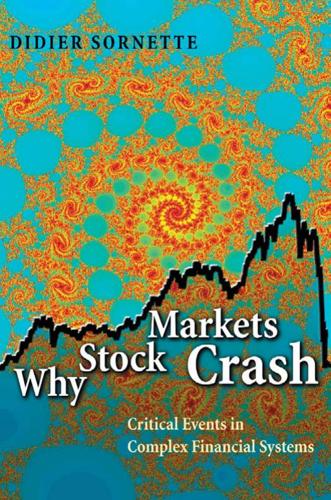
Why Stock Markets Crash: Critical Events in Complex Financial Systems
by
Didier Sornette
Published 18 Nov 2002
Thaler concluded that rather than rationally pricing mortality, people had a cognitive disconnect; they put a premium on new risks and casually discounted familiar ones [272]. In experiments designed to test his ideas, Thaler found that subjects would usually agree to pay more for a drink if they were told that the beer is being purchased from an exclusive hotel rather than from a rundown grocery. It strikes them as unfair to pay the same. This violates the law-of-one-price that one drink is worth the same as another, and it suggests that people care as much about being treated fairly as they do about the actual value of what they are paying for [227, 228]. An important discovery, extending the framing principle of Kahneman and Tversky, was “mental accounting” [423, 373].
…
Are there similar principles that can guide the determination of the equations of motion of the more down-to-earth financial markets? The Principle of Absence of Arbitrage Opportunity One such organizing principle is the condition of absence of arbitrage opportunity, which we have already visited in chapter 2. Recall that no-arbitrage, also known as the Law of One Price, states that two assets with identical attributes should sell for the same price, and so should the same asset trading in two different markets. If the prices differ, a profitable opportunity arises to sell the asset where it is overpriced model ing bubbles a n d c r a s h e s 137 and to buy it where it is underpriced.
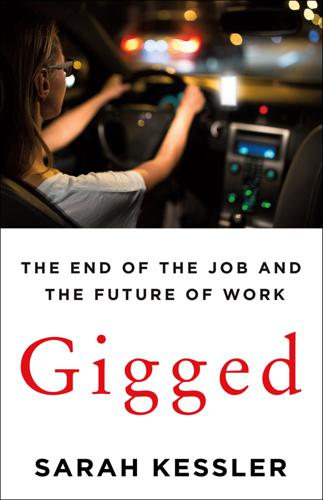
Gigged: The End of the Job and the Future of Work
by
Sarah Kessler
Published 11 Jun 2018
See “Appendix: Profile of Gig Earners and Online Sellers.” http://www.pewinternet.org/2016/11/17/gig-work-online-selling-and-home-sharing. 4 The New York Times Editorial Board. The Gig Economy’s False Promises. New York Times. April 10, 2017. https://www.nytimes.com/2017/04/10/opinion/the-gig-economys-false-promise.html. 5 Greenhouse, Steven. The Big Squeeze. Anchor Books, 2008, page 119. 6 Berlinski, Samuel. Wages and Contracting Out: Does the Law of One Price Hold? British Journal of Industrial Relations, vol. 46. November 2007. Pages 59–75. 7 Dube, Arindrajit, and Ethan Kaplan. Institute for Research on Labor and Employment Working Paper Series: Does Outsourcing Reduce Wages in the Low Wage Service Occupations? Evidence from Janitors and Guards. 2008. 8 US Government Accountability Office.
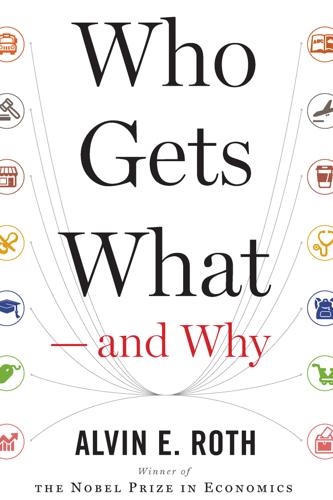
Who Gets What — and Why: The New Economics of Matchmaking and Market Design
by
Alvin E. Roth
Published 1 Jun 2015
For example, as I write this in 2014, two Stanford graduate students, Markus Baldauf and Joshua Mollner, are following up on the work of Budish and his colleagues by proposing a new design based on inserting some delays in how quickly offers may be accepted compared to how quickly they may be canceled, to protect liquidity providers in a different way from having their stale bids and asks sniped. [>] a better market: See Claudia Steinwender, “Information Frictions and the Law of One Price: ‘When the States and the Kingdom Became United’” (working paper, London School of Economics and Political Science, October 2014). [>] I received the offer: Christopher Avery, Christine Jolls, Richard A. Posner, and Alvin E. Roth, “The New Market for Federal Judicial Law Clerks,” University of Chicago Law Review 74 (Spring 2007): 448. [>] courtroom gladiators: Alex Kozinski, “Confessions of a Bad Apple,” Yale Law Journal 100 (April 1991): 1707. [>] “Increasing numbers”: Stanford Law School, “Open Letter to Federal Judges About Clerkships from Dean Larry Kramer,” SLS News, July 17, 2012, http://blogs.law.stanford.edu/newsfeed/2012/07/17/open-letter-to-federal-judges-about-clerkships-from-dean-larry-kramer/. [>] “Although the judges”: Judge John D.

The Drunkard's Walk: How Randomness Rules Our Lives
by
Leonard Mlodinow
Published 12 May 2008
Andrew Metrick, “Performance Evaluation with Transactions Data: The Stock Selection of Investment Newsletters, Journal of Finance 54, no. 5 (October 1999): 1743–75; and “The Equity Performance of Investment Newsletters” (discussion paper no. 1805, Harvard Institute of Economic Research, Cambridge, Mass., November 1997). 19. James J. Choi, David Laibson, and Brigitte Madrian, “Why Does the Law of One Price Fail? An Experiment on Index Mutual Funds” (working paper no. W12261, National Bureau of Economic Research, Cambridge, Mass., May 4, 2006). 20. Leonard Koppett, “Carrying Statistics to Extremes,” Sporting News, February 11, 1978. 21. By some definitions, Koppett’s system would be judged to have failed in 1970; by others, to have passed.

The Second Machine Age: Work, Progress, and Prosperity in a Time of Brilliant Technologies
by
Erik Brynjolfsson
and
Andrew McAfee
Published 20 Jan 2014
.* Over the past few decades, lower transaction in communication costs have helped create one big global market for many products and services. Businesses can identify and hire workers with skills they need anywhere in the world. If a worker in China can do the same work as an American, then what economists call “the law of one price” demands that they earn essentially the same wages, because the market will arbitrage away differences just as it would for other commodities. That’s good news for the Chinese worker, and for overall economic efficiency. But is not good news for the American worker who now faces low-cost competition.
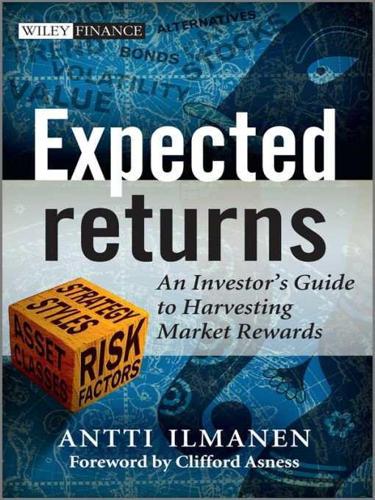
Expected Returns: An Investor's Guide to Harvesting Market Rewards
by
Antti Ilmanen
Published 4 Apr 2011
A well-known example is the Palm/3Com case, in which, near the peak of the dot.com mania, 3Com spun off its subsidiary Palm, selling 5% of its shares in the open market and promising the rest later. Palm instantly acquired a greater total market capitalization than its corporate parent 3Com, implying that the stub (3Com ex Palm) had a negative value. The Law of One Price clearly did not apply. Too few shares of Palm were available for arbitrageurs to take advantage of the opportunity (to sell Palm shares and buy 3Com shares, earning a large riskless profit). Once further Palm shares became available, this anomaly disappeared. Demand effects—examples • Demographic developments may have a significant impact on asset prices but the results are controversial.
…
Sack (2010), “Large-scale asset purchases by the federal reserve: Did they work?” Federal Reserve Bank of New York, Staff Report 441. Garcia, Juan A.; and Thomas Werner (2010), “Inflation risks and inflation risk premia,” European Central Bank working paper 1162. Garleanu, Nicolae; and Lasse H. Pedersen (2009a), “Margin-based asset pricing and deviations from the law of one price,” New York University working paper. Garleanu, Nicolae; and Lasse H. Pedersen (2009b), “Dynamic trading with predictable returns and transaction costs,” New York University working paper. Garleanu, Nicolae; Lasse H. Pedersen; and Allen M. Poteshman (2009), “Demand-based option pricing,” Review of Financial Studies 22(10), 4259–4299.
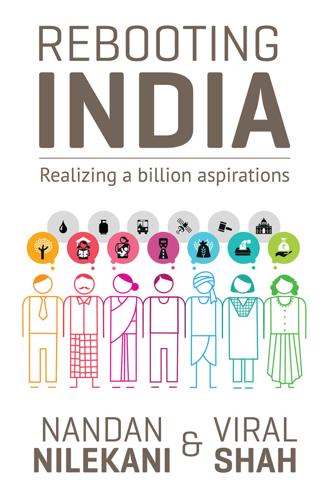
Rebooting India: Realizing a Billion Aspirations
by
Nandan Nilekani
Published 4 Feb 2016
Now, Shankaran and his associates simply call markets from Kottayam to Thrissur, negotiating the best price for their catch so that, ‘by the time we reach the shores, our business deal has been settled’, he says.1 The changes wrought by mobile telephones on the business fortunes of Shankaran and his ilk were the subject of a landmark study by Harvard economist Robert Jensen.2 He found that on average, consumers now paid 4 per cent less for their fish while the fishermen’s average profit went up by 8 per cent; waste had been eliminated, markets had become efficient and fish were now uniformly priced across the region—what economists call the ‘law of one price’. Follow-up studies found that fishermen credited their phones with more than just improving their income; they ‘used their phones to maintain relations within and outside the market, and protected themselves during times of risk, vulnerability and emergency’.3 Certainly, when the Indian government threw open the telecom sector to private players to usher in mobile telephony, nobody could have anticipated that Kerala’s fish economy would receive a substantial boost.
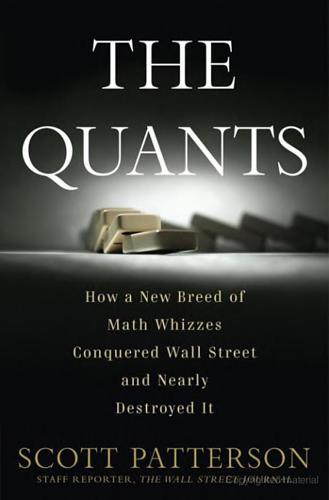
The Quants
by
Scott Patterson
Published 2 Feb 2010
While this was difficult when traders were swapping stocks beneath a buttonwood tree on Wall Street in the eighteenth century, the invention of the telegraph—and the telephone, the high-speed modem, and a grid of orbiting satellites—has made it much easier to accomplish in modern times. Such obvious discrepancies in practice are rare and are often hidden in the depths of the financial markets like gold nuggets in a block of ore. That’s where the quants, the math whizzes, step in. Behind the practice of arbitrage is the law of one price (LOP), which states that a single price should apply to gold in New York as in London, or anywhere else for that matter. A barrel of light, sweet crude in Houston should cost the same as a barrel of crude in Tokyo (minus factors such as shipping costs and variable tax rates). But flaws in the information certain market players may have, technical factors that lead to brief discrepancies in prices, or any number of other market-fouling factors can trigger deviations from the LOP.
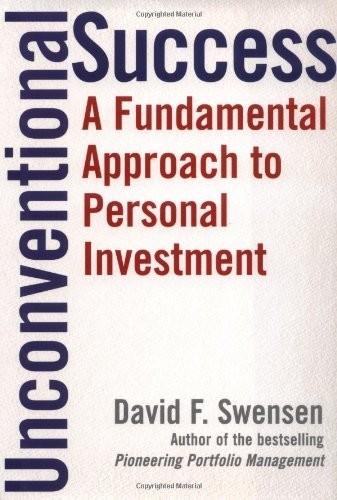
Unconventional Success: A Fundamental Approach to Personal Investment
by
David F. Swensen
Published 8 Aug 2005
The execution of index-fund management requires no particular strategy, depends on no specially trained personnel, and produces no newsworthy track record. After funds under management reach an appropriate scale, size ceases to matter. In contrast to the world of active management, passive management produces a simple story. Economic theory teaches the law of one price, viz., that in freely competitive markets identical goods or services trade at identical prices. In the case of index-fund management, the portfolio management fees charged by various service providers should be identical, or nearly so. Otherwise, rational consumers transfer funds from high-cost providers to low-cost providers, thereby driving the greedy (or inefficient) fund-management companies to reduce prices or exit the business.
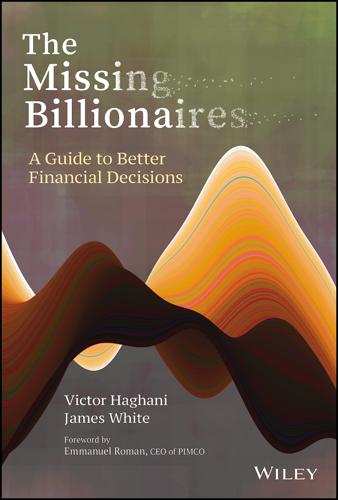
The Missing Billionaires: A Guide to Better Financial Decisions
by
Victor Haghani
and
James White
Published 27 Aug 2023
Chicago Board Options Exchange. (2021). Daily market statistics. Retrieved January 10, 2023 from https://www.cboe.com/data/market_statistics/ Choi, J. (2022). Popular personal financial advice. Cambridge: National Bureau of Economic Research. Choi, J., Laibson, D., and Madrian, B. (2010). Why does the law of one price fail? An experiment on index mutual funds. Review of Financial Studies, 23(44), 1405–1432. Clarke, A., Nolan, M., and Sampson, T. (2019). What is a mutual fund worth? Vanguard. CME Group. (2021). Daily equity volume and open interest. CME Group. (2021). Daily equity volume and open interest.
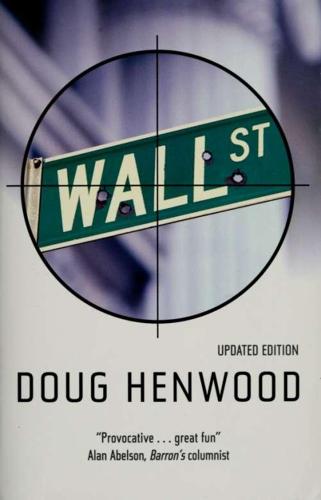
Wall Street: How It Works And for Whom
by
Doug Henwood
Published 30 Aug 1998
Al. Fromme, Herbert (1995). "Munich Re Counts the Cost of Chaos," Lloyd's List, March 14, 1995. Fromson, Brett D. (1994). "Whitewater Rumors Push Dow Down 23; Perceptions, Not Specifics, Spook Markets," Washington Post, March 11. Froot, Kenneth A., Michael Kim, and Keneth Rogoff (1995). "The Law of One Price Over 700 Years," mimeo, Harvard Business School. Froot, Kenneth A., and Andre F. Perold (1990). "New Trading Practices and Short-Run Market Efficiency," National Bureau of Economic Research Working Paper No. 3498. Fullerton, Howard N. (1992). "Evaluation of Labor Force Projections to 1990," Monthly Labor Review 115 (August), pp. 3-14.

The Fissured Workplace
by
David Weil
Published 17 Feb 2014
. ______. 1968. “Crime and Punishment: An Economic Approach.” Journal of Political Economy 76, no. 1: 169–217. Berle, Adolph, and Gardiner C. Means. 1932. The Modern Corporation and Private Property. New York: Harcourt, Brace and World. Berlinski, Samuel. 2008. “Wages and Contracting Out: Does the Law of One Price Hold?” British Journal of Industrial Relations 46, no. 1: 59–75. Berman, Eli, John Bound, and Zvi Griliches. 1994. “Changes in the Demand for Skilled Labor within US Manufacturing Industries: Evidence from the Annual Survey of Manufacturing.” Quarterly Journal of Economics 109, no. 2: 367–397.
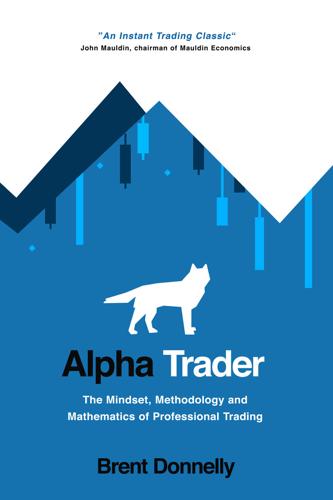
Alpha Trader
by
Brent Donnelly
Published 11 May 2021
Those “nonsensical” moves happen every day and are purely subjective and meaningless. The other kind of nonsensical move is when there is a move that represents a huge divergence from a mathematically known outcome that is on the foreseeable / tradable horizon. These are quantifiable or observable violations of efficient markets or the law of one price and are much less subjective. There were multiple examples of this in 1999/2000. The most famous is when 3COM spun off 5% of PALM91. The hot thing at the time was handheld gadgets so everyone wanted to own PALM and their awesome Palm Pilots. Nobody cared about poor old 3COM and their dial-up modems and PCMCIA cards.

Manias, Panics and Crashes: A History of Financial Crises, Sixth Edition
by
Kindleberger, Charles P.
and
Robert Z., Aliber
Published 9 Aug 2011
Juglar,9 Mitchell,10 and Morgenstern11 noted that financial crises tend to be international, and either affect a number of countries at the same time or alternatively spread from the centers where they originate to other countries. One of the several links among countries is that arbitrage connects national commodity and financial markets; the implication of the Law of One Price is that the difference in the prices of identical or similar goods in various countries cannot exceed the costs of transport and trade barriers. The links between commodity markets in different countries may involve only a modest amount of trade. When the price of cotton soared in the 1830s in one country, the price increased in all other countries; similarly the decline in the price of cotton after 1864 was worldwide.
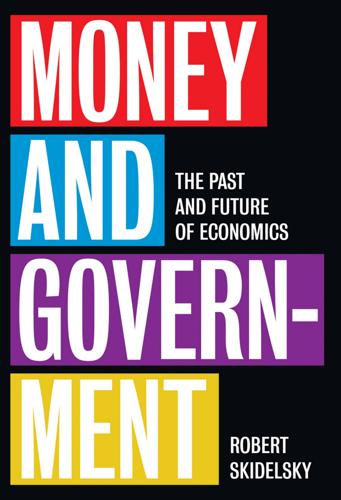
Money and Government: The Past and Future of Economics
by
Robert Skidelsky
Published 13 Nov 2018
But this particular type of labour flexibility depended on having excess supplies of labour in one part of the world and excess supplies of land in another. 2. The predominantly commodity structure of international trade, and the low share of non-tradable services in domestic GDPs, meant that, on the whole, the law of one price prevailed, limiting the need for price adjustment. The wedge between domestic and foreign prices, which made the adjustment problem so politically fraught in the twentieth century, was much less pronounced before 1914. 3. International trade was relatively non-competitive. The massive reduction in transport costs enabled a long-distance trade to build up between the core European countries and their overseas or transcontinental peripheries.